Hours: Thurs-Mon, noon-6 pm

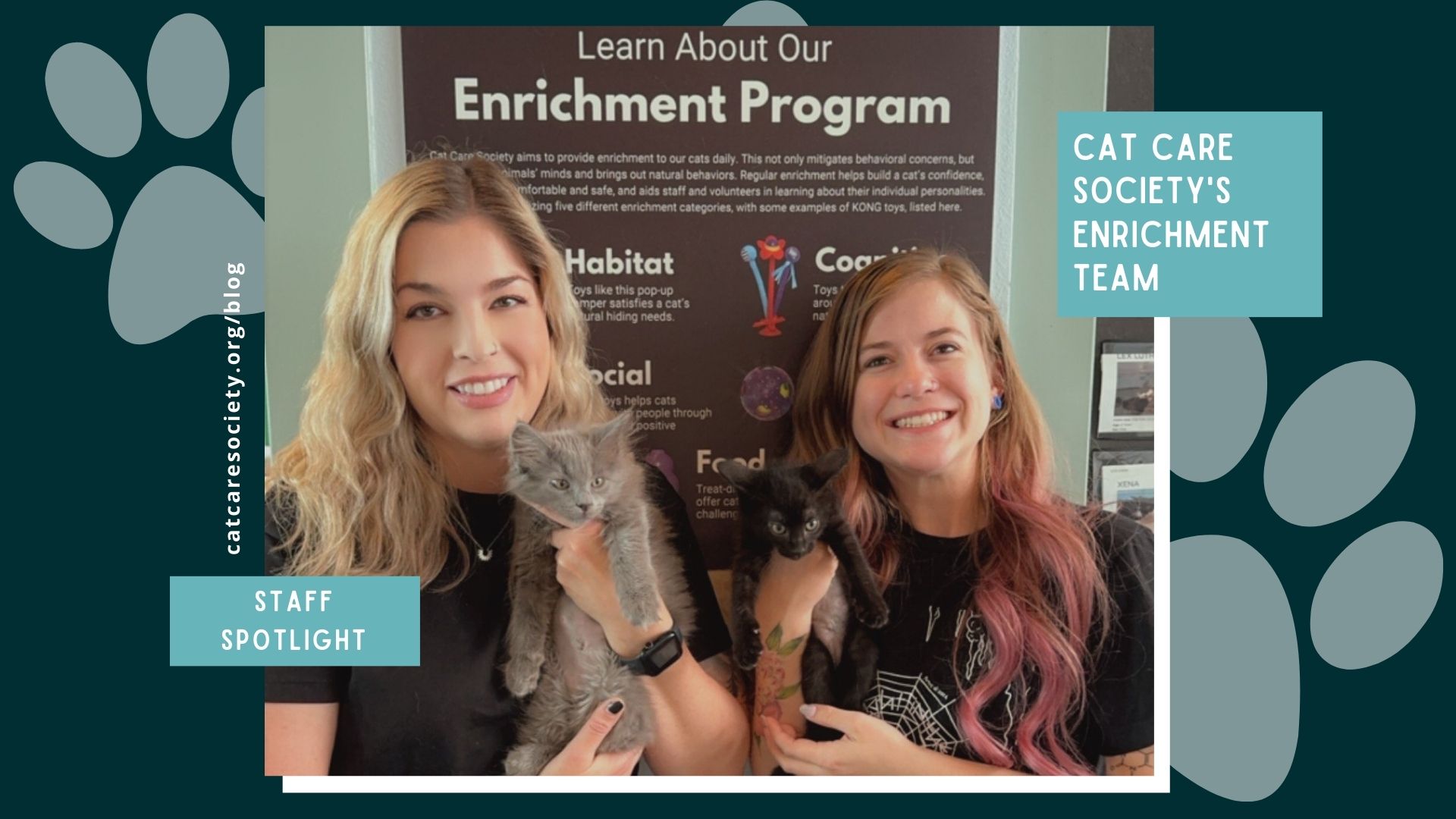
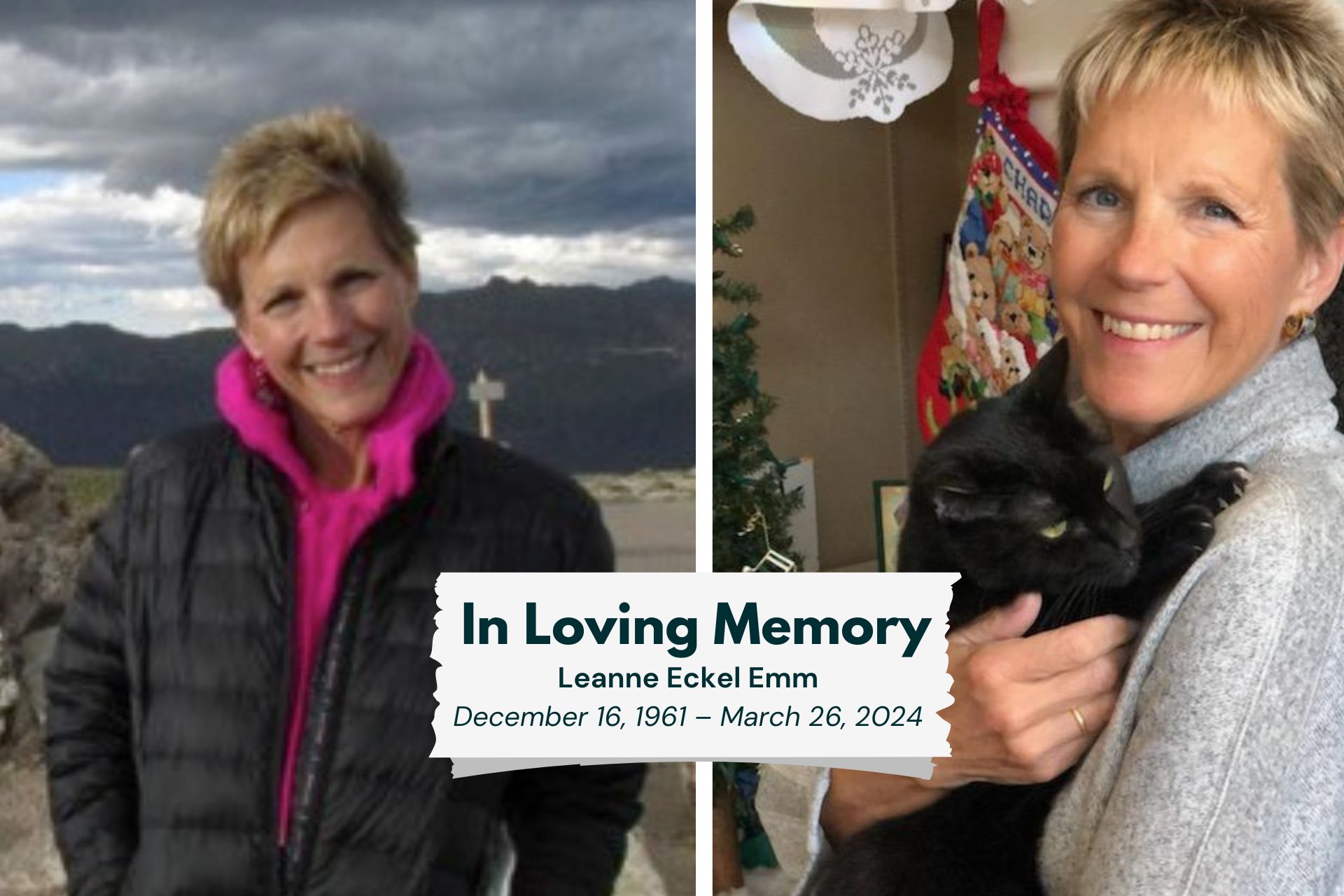
A woman full of life, love and light, another Cat Care Society supporter, Leanne Emm passed away this past March.
A fourth generation Colorado native, Leanne was known for her sense of adventure, intellect and devotion. With decades of public service, she held roles in city and county government, going on to lead as the deputy commissioner of the Colorado Department of Education. When she wasn’t working, Leanne loved fitness, river rafting, watercolor paintings and napping in the sun with her cats (four of them adopted from CCS!).
Leanne served on CCS’ board of directors in 2017, and after retiring from her career in 2018, stepped into a larger, critical role as interim executive director. “It had been a turbulent couple of years for CCS, and Leanne was such a positive, steadying influence,” remembers Clyde Dawson, another long-time board member. “And what a sense of humor! As it turned out, one of the most important contributions she made to CCS was organizing and conducting the search for a permanent ED. She was an avid whitewater rafter and had been looking forward to river-running nearly full time in retirement. She also remained a strong supporter of the organization.”
Clyde recalls Leanne as a tremendous asset to CCS — “exceptionally intelligent, with a keen grasp of finances and management issues of all sorts, as well as warm and engaging,” he said. “I think she won us all over when she wrote in her board application that one reason she was interested in board service was that it would give her an excuse to come into the shelter more often and play with the cats!”
Leanne’s daughter Charlotte says that her mother loved cats her whole life, that they were a really grounding thing for her. “She just loved all animals, and cats were her favorites — that and baby goats and horses!” she said. “She loved CCS and seeing how happy people were when they got to bring a cat home.”
Leanne’s last update in the summer 2018 Cat Care Quarterly oozed her warm, bright personality and gratitude. For everything that she brought to our organization and the world, we’re grateful for her, too.
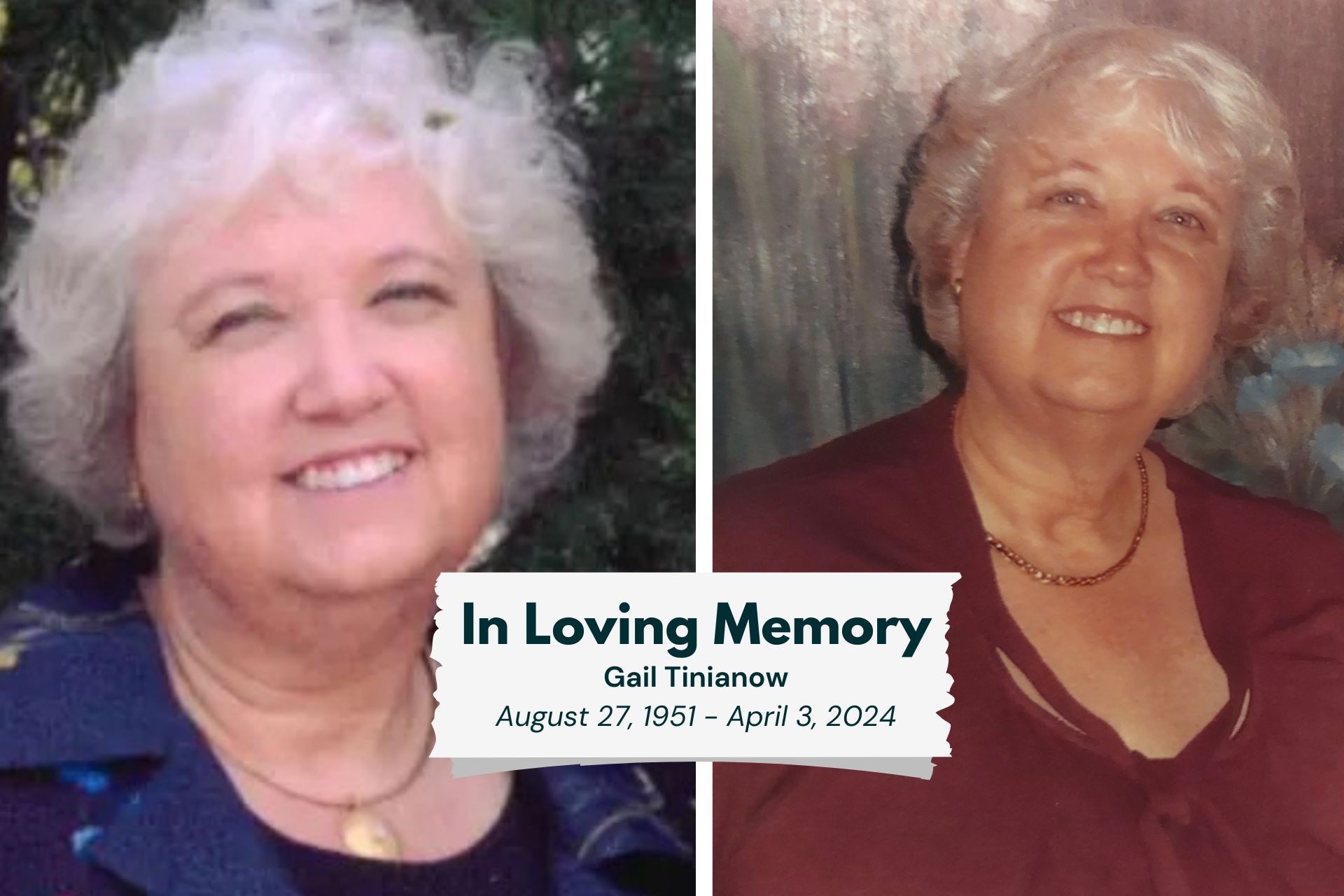
A long-time Cat Care Society supporter and leader, Gail Tinianow, passed away this spring, leaving behind a commitment to cats and a love for travel.
A child of Air Force parents, Gail was born in New York and lived in various parts of the U.S. and Spain. Early in her career, Gail worked for the federal government in Washington, D.C., and eventually earned a degree in business administration from Arapahoe Community College. She and her husband Marty married in 1985; she retired in 2006. Marty shared that Gail’s love of cats was extensive.
Her retirement marked the start of a 10-year dedication to Cat Care Society, when she began looking for volunteer opportunities. Jane Dorsey interviewed Gail to work in Cajun’s Closet, Cat Care’s thrift shop, in 2008. In 2011, she joined the board of directors to help ensure the financial success of CCS. Over the next several years, she would go on to hold roles of secretary, vice president, and president. In those days, CCS had a working board, recalled Ken Dobrovolny, so Gail was hands-on in the day-to-day operations of the shelter “and ran a tight ship.”
Jane Dorsey recalls Gail’s enjoyment of the Santa Paws Festival and the role she played in the planning committee. “I remember her bringing detailed records of everything from the prior year and challenged us to make it even better,” she said. “She was so enthusiastic about everything she took on, and that made it fun to work with her.”
Gail also generously donated a trip to her timeshare in Hawaii for the Tails of the Painted Cats auction more than once. “She was so excited when she came up with the idea of pairing a trip with a Hawaiian-themed sculpture,” Jane said. “Artist and volunteer Pat Lickly created the Hawaiian cat, and we had fresh flower leis made for Gail and the high bidder that night. She loved that event and whole-heartedly supported it.”
In the winter 2016 Cat Care Quarterly as board president, Gail wrote: “Our first order of business in the new year entails recruitment of an executive director. Your board has been running the Society since 2011, and I’m happy to report that we are now financially strong enough to fill this position. I’m simply honored to be at the helm of this great organization and cannot express enough appreciation for our amazing donors, volunteers and staff.”
Gail eventually stepped back from the board in 2018, but we will remember her for many, many more years to come.
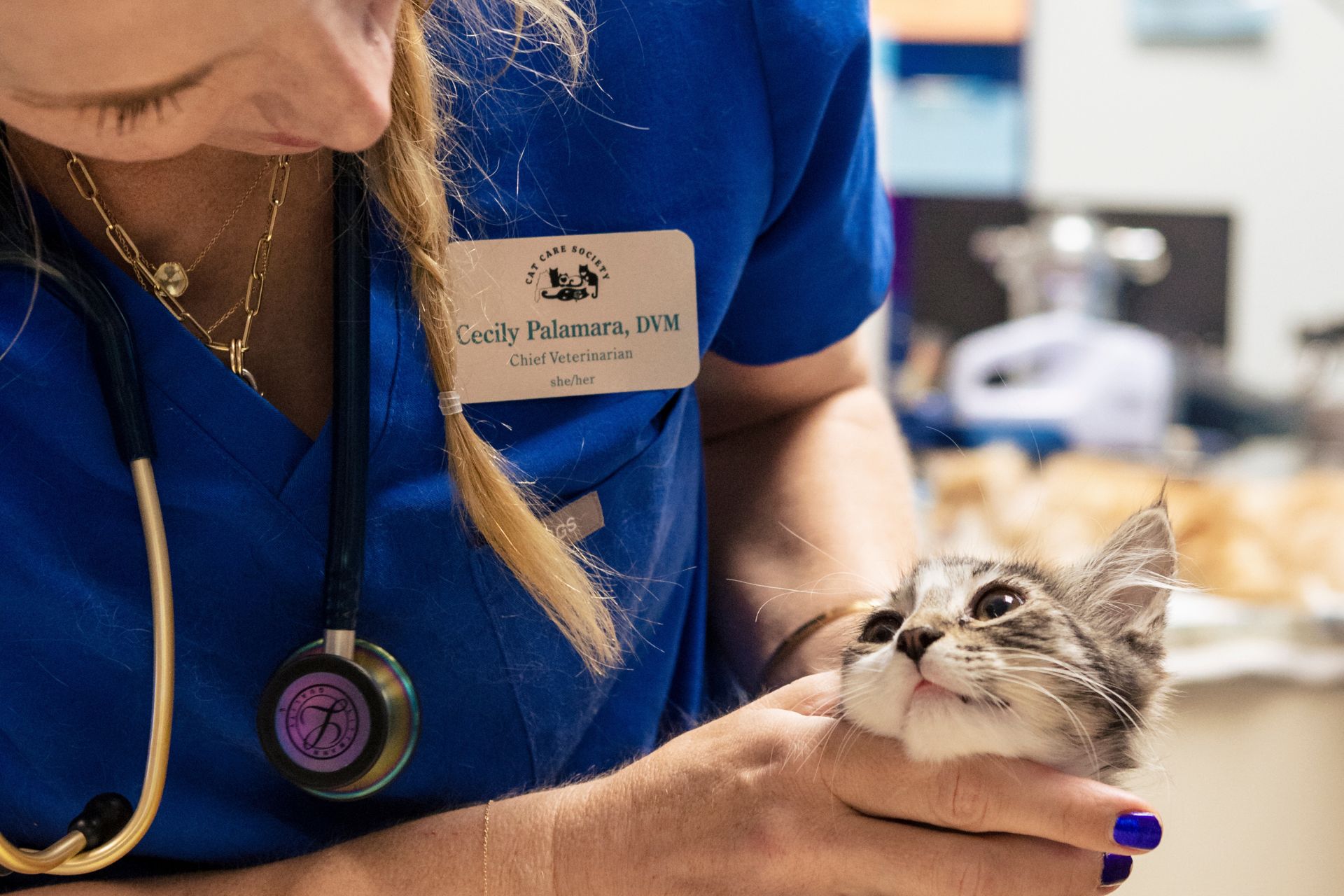
It’s hard to say who is most valuable to an organization, but for a cat shelter, the medical and veterinary team is absolutely crucial in keeping our animals healthy. Here at Cat Care Society, a small handful of employees are responsible for the overall well-being of the cats and caring for any medical issues that come through the doors.
Many people may not realize that the vet team in a shelter looks very different than a traditional private vet clinic. This is because not only do they treat any current medical needs an animal has, but they’re also responsible for considering the medical pathway for a cat all the way through adoption. This dynamic team treats animals not just in our shelter, but readies them for life in a home setting. And, they have to balance this work in a noisy setting with multiple animals and people coming in and out, often with unexpected challenges to pivot around.
“The medical team in a shelter is a highly skilled team that we couldn’t do without,” said EC Michaels, CCS’ executive director. “They are asked to be on their feet while thinking big about the whole animal. When we get a cat with kidney disease, for example, they’re not just saying ‘they have kidney disease,’ but also looking at what we do to manage it here and how to educate adopters so they can manage it later. We are able to decrease the spread of contagion and increase adoptions because of this way of thinking.”
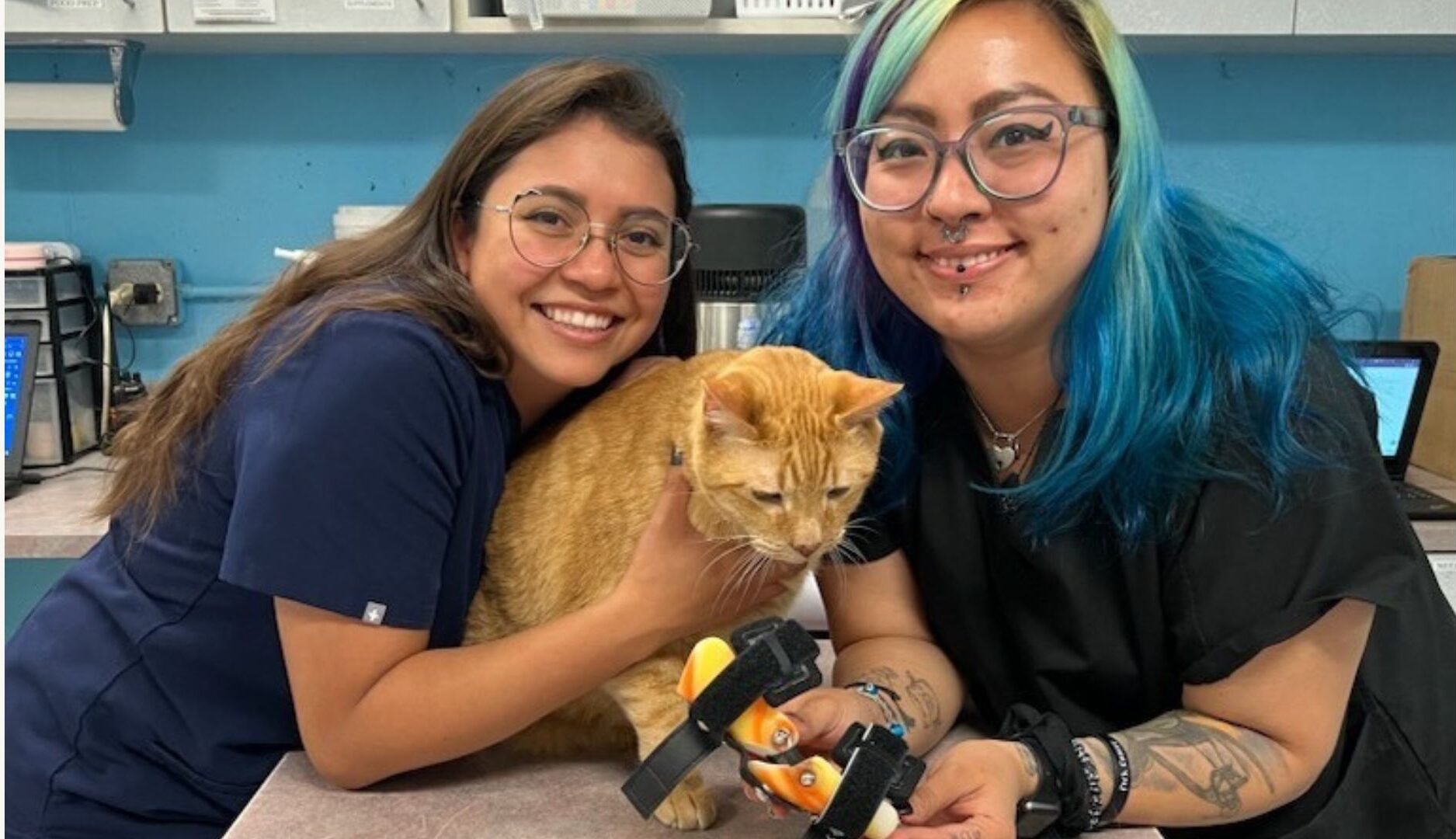
This team must also be ultra-coordinated because of the high volume of care that is needed, everyone has a role to play. The veterinary services manager oversees the whole process by scheduling the team, organizing surgical days, monitoring the shelter population, maintaining SOPs and protocols, monitoring inventory, and exploring new treatments. Our vet techs ensure the flow of animals that need treatment or surgery, run anesthesia, prioritize needs, check medications, maintain records, approve animals for adoption, and work with the foster team to build a plan for each cat. On surgery days, they ensure there is always a patient ready for a vet and administer drug protocols while the assistants monitor vitals, check diagnostics, sanitize tools and ensure the cats wake up appropriately.
Our veterinarians are able to perform about 30 spays and neuters in just one day! This happens about three times a month in the busy season and twice in the slower winter. They also do about 4.5 dental procedures a week — or 200 a year.
The medical team begins each morning by taking blood glucoses on the diabetic cats and feeding them breakfast, then providing treatments for the rest of the shelter. Then they either have scheduled surgeries, work through the CVT checklist or complete intakes on new cats. After this, they clean up the clinic and get ready for evening treatments, which includes another blood glucose reading and dinner for the diabetics, and medications for cats in the rest of the shelter.
On a daily basis, the medical team is constantly performing phlebotomy to obtain lab work, performing radiographs, running anesthesia for procedures, performing dental prophylaxis under the supervision of a veterinarian, performing intake exams on new cats arriving at the shelter, and making sure that our population is healthy and thriving. And of course, responding to any emergencies!
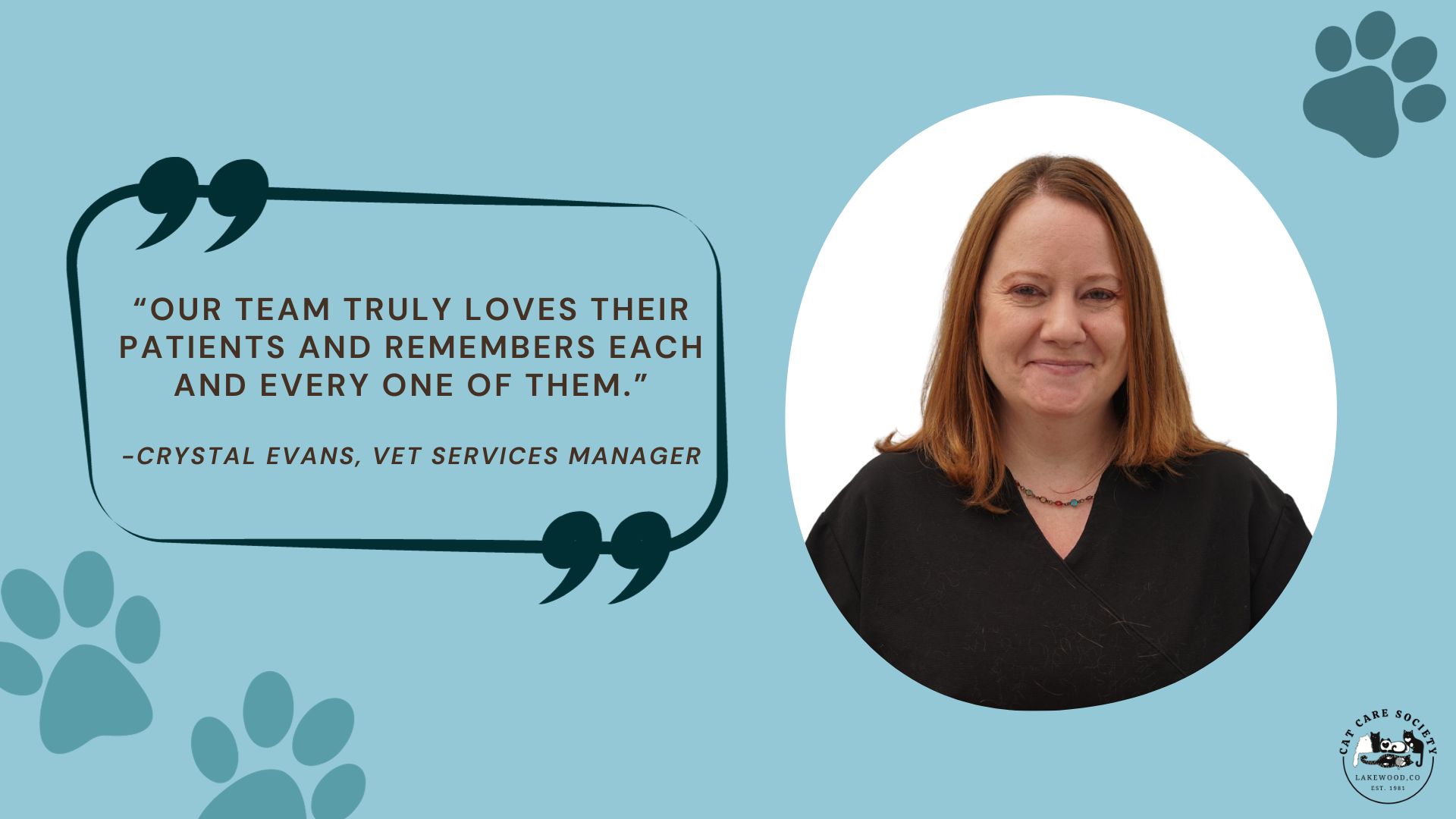
Another misconception is that every single animal in a shelter receives a full medical exam from a veterinarian. Because our shelter vets time is so limited, we preserve the resources we have. Therefore, only cats that require their attention are escalated to a vet by the rest of the team. Our techs are responsible for intake exams, which includes a general once-over and any vaccines and dewormers. Then, they are trusted to route the animal to either the adoption floor, for behavioral attention or to receive additional vet care.
We are also proud to take on some pretty complicated medical cases that weren’t previously managed for a cat before he or she came to our shelter. We’re often able to identify the source of a cat’s medical or behavioral issue and provide medication or treatment to improve their quality of life. It’s kind of like a medical makeover or a glow up so that they leave the shelter in better shape than when they came in. A recent example of this is Rambo (pictured above), who came to us early this year with three housemates after his owner passed away. After his initial exams and bloodwork, we noticed some lameness and within a few days, a limp was isolated to his left hind leg. Rambo was discovered to be walking flat on his entire foot rather than just on his toes. We also discovered pancreatitis and early stage kidney disease. He was switched him to a new diet, which helped Rambo’s daily life. After a few months, Rambo was fitted for a leg brace thanks to the help from an orthopedic specialist. He now has increased mobility and comfort to walk around thanks to his new brace!
“Our team truly loves their patients and remembers each and every one,” Crystal Evans, vet services manager, said. “We provide cats with a turbulent past or medical issue that would normally not be adopted out a second chance at finding their forever homes.”
Not only is this team advocates for the voiceless, but they ensure our cats receive the best care possible.
In calendar-year 2023, the CCS medical team was responsible for:
As of summer 2024, the CCS medical team consists of:
We thank each of our veterinary staff for their dedication, skills and contribution to the livelihood of our cats.
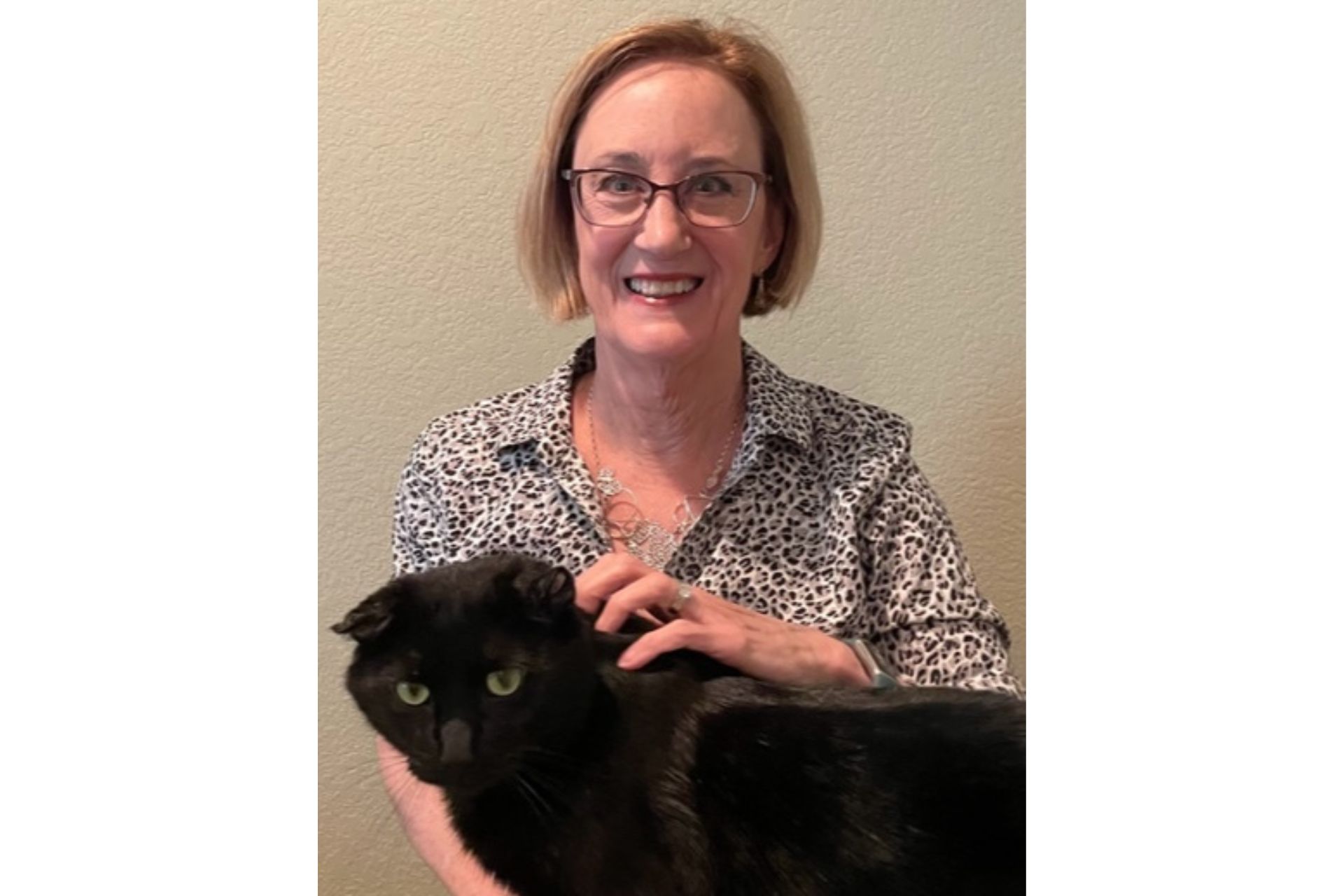
Kathy McChesney doesn’t do anything lightly. This Cat Care Society supporter extraordinaire goes the extra mile by serving on the board of directors and multiple committees, volunteering her time and resources, helping at events and providing transportation, and donating on top of it all. Why does she go so “all in” for CCS? “Because everything is about the cats!” she proudly exclaims.
Originally from Texas, Kathy moved to Denver in 2018 after years of running her own cat rescue. Relocating for work as an airline pilot, she retired in 2021. With her own passion for cats, she was on the hunt for a new cat shelter to help. Thanks to the suggestion of her financial advisor, Michaela Sullivan (who also now serves on the CCS board), she began donating to us. The real turning point was when she was invited to a holiday event and met some of the staff and saw the shelter in person.
Shortly after, Kathy joined the board and became even more involved. Today, she serves as secretary, is on the governance committee and strategic plan workgroup, assists at events, transports cats to specialty medical appointments, writes for our blog, donates financially through a donor-advised fund (DAF), and is a member of the Nine Lives Legacy Society.
Kathy has multiple cats of her own — all sweet rescues and strays that she has adopted who follow her everywhere — and is shining example of what a cat lover who gives back can look like. Kathy often brings her experience and perspective to the table, advocating for black cats and sharing how unique and special the animal welfare landscape is in Colorado. For instance, she shares that in Texas, shelters in the state are overwhelmed in a way that we haven’t quite seen here. Attitudes are cultures are different there, where it is more prevalent for animals to not be spayed or neutered, and sadly, often dumped if they’re no longer wanted. This is what fuels her to give back now.
“I donate because I’ve run own rescue and know how hard it is to get people to give; I understand the need,” she said. “Cats are the most important thing in my life, and I‘ve been fortunate in my career, so I’d rather help cats than anything else.”
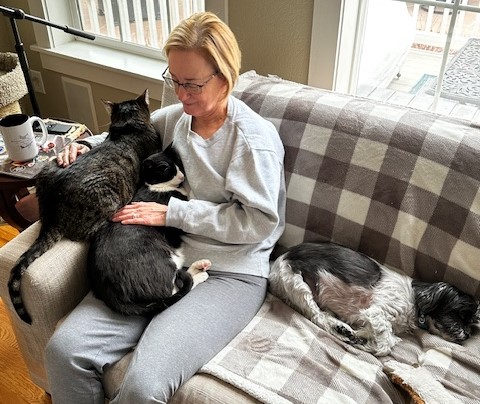
The reason Kathy keeps coming back to Cat Care Society in particular, she says, is because of the cats themselves and our policies. “It’s just everything, the open concept, the way we take in animals that would be put down somewhere else, the Temporary Care Program and how it helps people, and that we always go the extra mile for every single cat,” she said. “I’ve never seen a shelter that does that. It is so unique, and the cats are so happy. I can feel comfortable walking into CCS and not feeling like I need to bring every cat home.”
Kathy also appreciates the variety of ways in which she can give. The DAF provides so many tax benefits, and is easy to set up with a financial institution. And the Nine Lives Legacy Society gives her reassurance that her animals will be taken care of if both her and her husband are gone. “I know they’ll be well taken care of, and I trust they’ll be adopted into good homes,” she said. “It’s the best way I know to support cats in the way they should be supported.”
Another innovative idea that Kathy helped facilitate was a relationship between CCS and Colorado State University in Fort Collins. There, Dr. Michael Lappin, director of companion animal studies, runs a program called Saving Animals in Shelters by Teaching (SAST). This program accepts animals from shelters who need complex surgeries that go beyond a shelter’s capacity. Used for things like heart surgeries, which would be incredibly costly at a specialist, it also affords veterinary medicine students the ability to learn and practice. Kathy was generous enough to use her connections at the school to expand their service to CCS as well, and now a year later, our first cat underwent a successful internal hernia surgery there. “Something this complex would be so expensive, and we got it at cost,” she said. “Plus, we don’t have enough vets The country doesn’t have enough vets! So anything we can do to train vets is hugely helpful.”
“My whole life, all I’ve wanted to do is take care of cats,” Kathy added said. “I give to CCS because I know that all the money donated is used for the right reasons. It all goes to the cats, and Cat Care Society is the best place I can imagine for a cat in need to be — if not in someone’s home of course.”
If you’d like to give to Cat Care Society too, visit our Ways to Give page for a list of ways your support can help save more cats in our community!
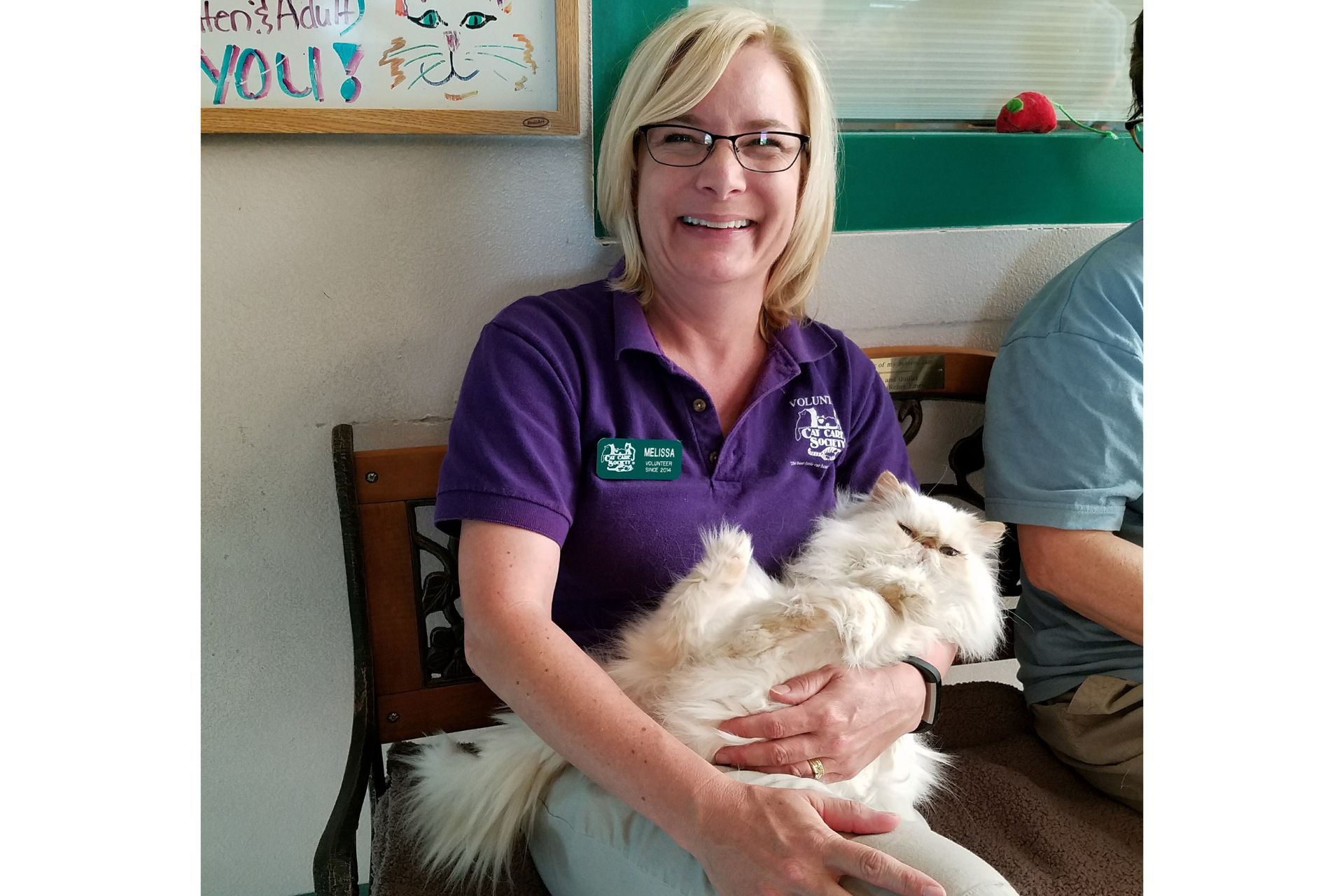
Cat Care Society is lucky to have hundreds of incredibly dedicated volunteers, many of whom have been staples around the shelter for years or even decades. One long-time volunteer is about to approach her 10th year!
Melissa Colsman began volunteering with CCS in 2014, originally drawn to spend time here after she first visited when looking to adopt a new kitty. It was the atmosphere of all of the cats roaming, playing and lounging that drew her in. Since her first CCS introduction, Melissa had adopted three CCS cats, and her parents adopted two. “The love and care for all of the cats is apparent in everything from the shelter design to the adoption policies to the focus on housing cats who have more needs,” she said. “I love being able to go to the shelter and interact with cats so readily. You can feel the love at CCS!”
Melissa’s first volunteer gig was our nursing home program, in which she brought shelter cats to senior centers for snuggles (a program that ended when the pandemic hit). Later, she was trained to be an adoption assistant, which provided extra help to staff on busy weekends. There, she helped greet clients, orient them to the shelter, provide information about adoption and link them to staff to start the adoption process.
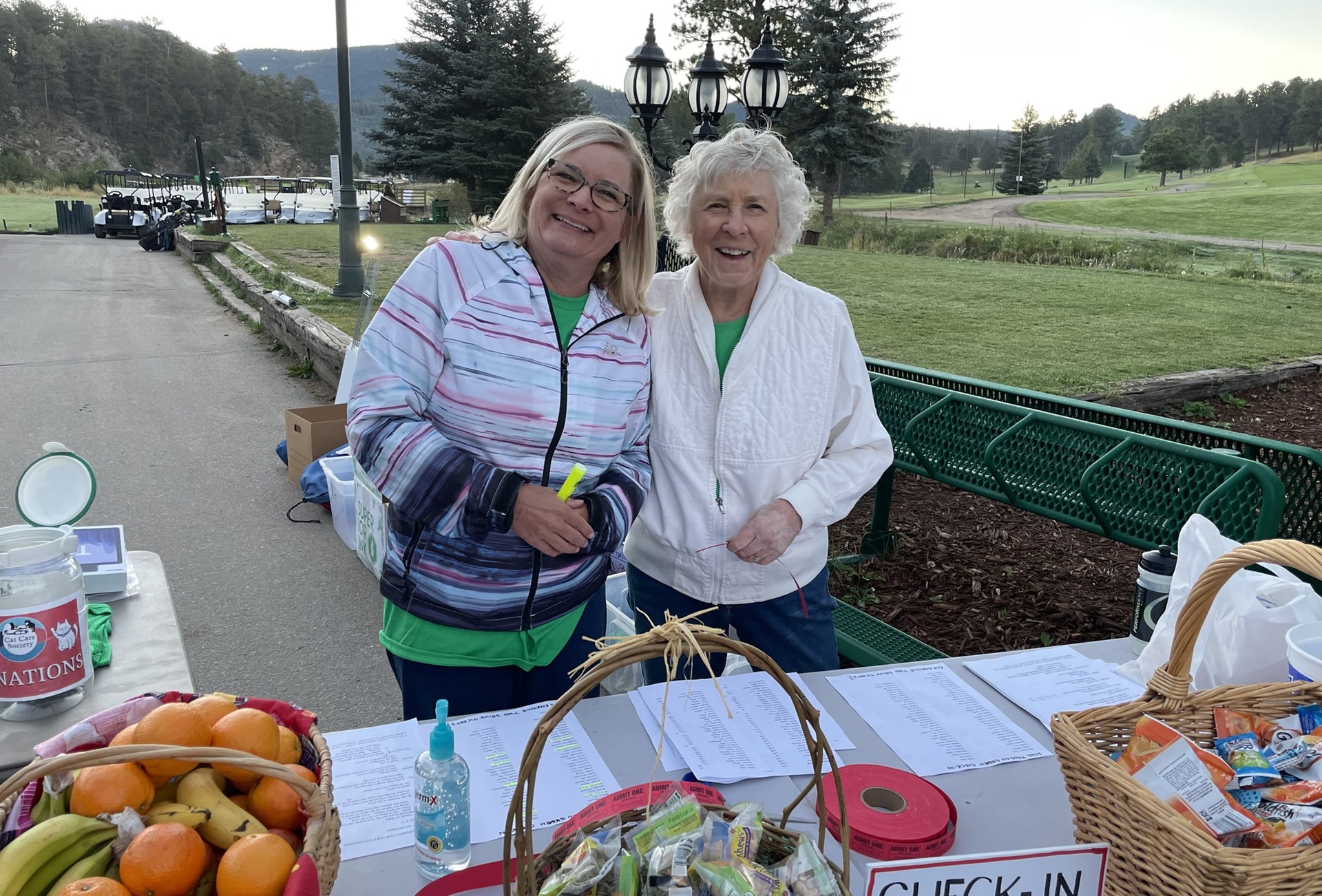
In 2022, Melissa retired after 34 years as an educator. At that time, she started working with another volunteer, Erin, to assist with our on-site store, Meow Mart. Together, the two keep it stocked, price new items and assist with inventory — while making plenty of time to snuggle all of the kitties. “I just have a great time with my Meow Mart partner, Erin,” she said. “We laugh, problem-solve, and have fun helping Mandy keep [it] running.”
Melissa also helps at various events like Santa Paws and the golf tournament, both of which are great fundraisers for the shelter. “With each job, I’ve been able to see that I’ve been able to help staff and clients have a good experience at the shelter,” Melissa said. “It’s gratifying to be able to help, even if it’s just keeping wand toys stocked so cat owners have ways to engage with their fur babies. It feels good to help an organization that you believe in. It’s one thing to provide funding, which is incredibly important! But it is also personally satisfying to be able to give my time, energy and love directly to the shelter.”
“We love having Melissa’s help around the shelter!” added CCS’s Volunteer & Events Manager Mandy Babb. “She is consistently reliable and has played such a crucial role in keeping things running for many years. I know that when Melissa is on hand at an event, or when she’s managing Meow Mart, that we can count on everything running smoothly. Her history here is invaluable, and her passion is evident in the work she does for the CCS cats, and we couldn’t thank her more!”
If you’re interested in volunteering, learn more and apply at www.catcaresociety.org/volunteer.
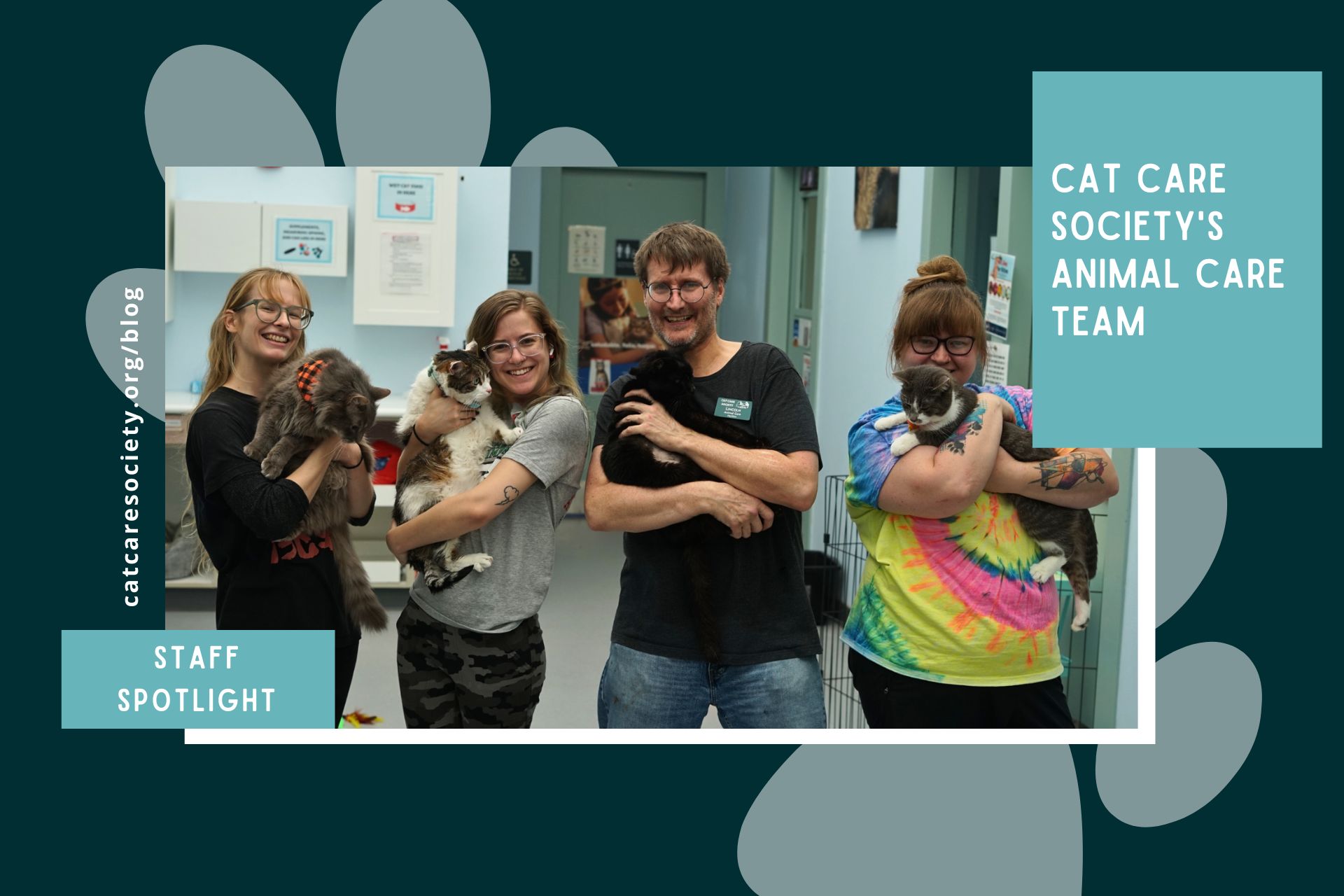
One of the most crucial roles to any animal shelter is making sure that the animals in our care are well taken care of. And the department at Cat Care Society responsible for this is our animal care team. These staff members are the most hands-on with the cats on a daily basis.
Rain or shine, holiday or not, this team shows up for the cats in a big way! A typical day starts with morning rounds, where they take inventory of all the animals in the shelter to ensure every cat is accounted for and there is nothing abnormal. They then work together to get set up for the day, which includes food prep and feeding, laundry, restocking, splitting up rooms and quarantine areas, offering enrichment to the cats after cleaning, and sifting through donations. “Not a lot of down time for us, but the day is fun and goes quickly!” said Michelle Duvall, animal care lead.
This team is also responsible for maintaining the cleanliness of the facility, creating and implementing vital enrichment programs and techniques to keep the cats happy and their minds and bodies nourished, reporting to and communicating with the medical team when any abnormalities and illness is recognized, communicating with the adoptions team about behavior and personality traits to help cats find compatible homes, and working closely with the animal care volunteers.

Just one example of the impact this team has is with two recent bonded cats that were in our care: Garfield and Big Red, both FIV boys. Cats with FIV are usually in shelters longer due to the public not fully understanding the disease. Garfield came to CCS as extremely fractious and was near impossible to handle. “He was not facing a good fate,” Duvall recalled. “He is the reason why animal care, especially Kelly, took on a strong compassion for socialization and enrichment.”
It took months for Garfield to trust humans, until one day he met Big Red, another very shy boy. The two bonded quickly and were placed in a room by themselves. That’s when the team was finally able to touch him! Garfield was eating Churus from a long handle, and then soon enough our fingers, and then rubbing between our legs for attention. “You could see the change in his eyes; he was brighter, happier, and overall the sweetest boy,” Duvall said. “Our team cried the day they went home with each other, and we all realized how important our job is when it comes to giving these guys a second chance!”
Last but not least, it’s also important that this team understands and implements the rules and regulations of the Pet Animal Care and Facilities Act (PACFA), which is Colorado’s program that licenses and inspects animal facilities and protects the well-being of the animals in the state.

This team currently consists of eight staff members:
Duvall says that working in this shelter environment has been the most rewarding and exciting job she has ever worked. “It’s been amazing to see cats open up to humans,” she shared. “My favorite cases are the ones who were otherwise deemed ‘unhandleable’ learn to open up and trust humans. It’s amazing to work with like-minded people who have a passion for cats, who are very misunderstood creatures in my mind. While this job isn’t always easy as some animals don’t always make it beyond the shelter walls, it’s amazing to be a part of their lives to ensure they have a happy, health, and clean home, even if it may be temporary. The most rewarding of it all is bonding and seeing them moving along to families! It’s so difficult to not take them all home (I’m a foster fail with my current cat Albus; formerly Simon).”
Animal care techs have a labor-intensive job that requires a lot of physical movement and lifting, and they deal with some less-than-glamourous clean-up situations. But for everything they do, we thank them for the tireless dedication to the cats of our shelter.
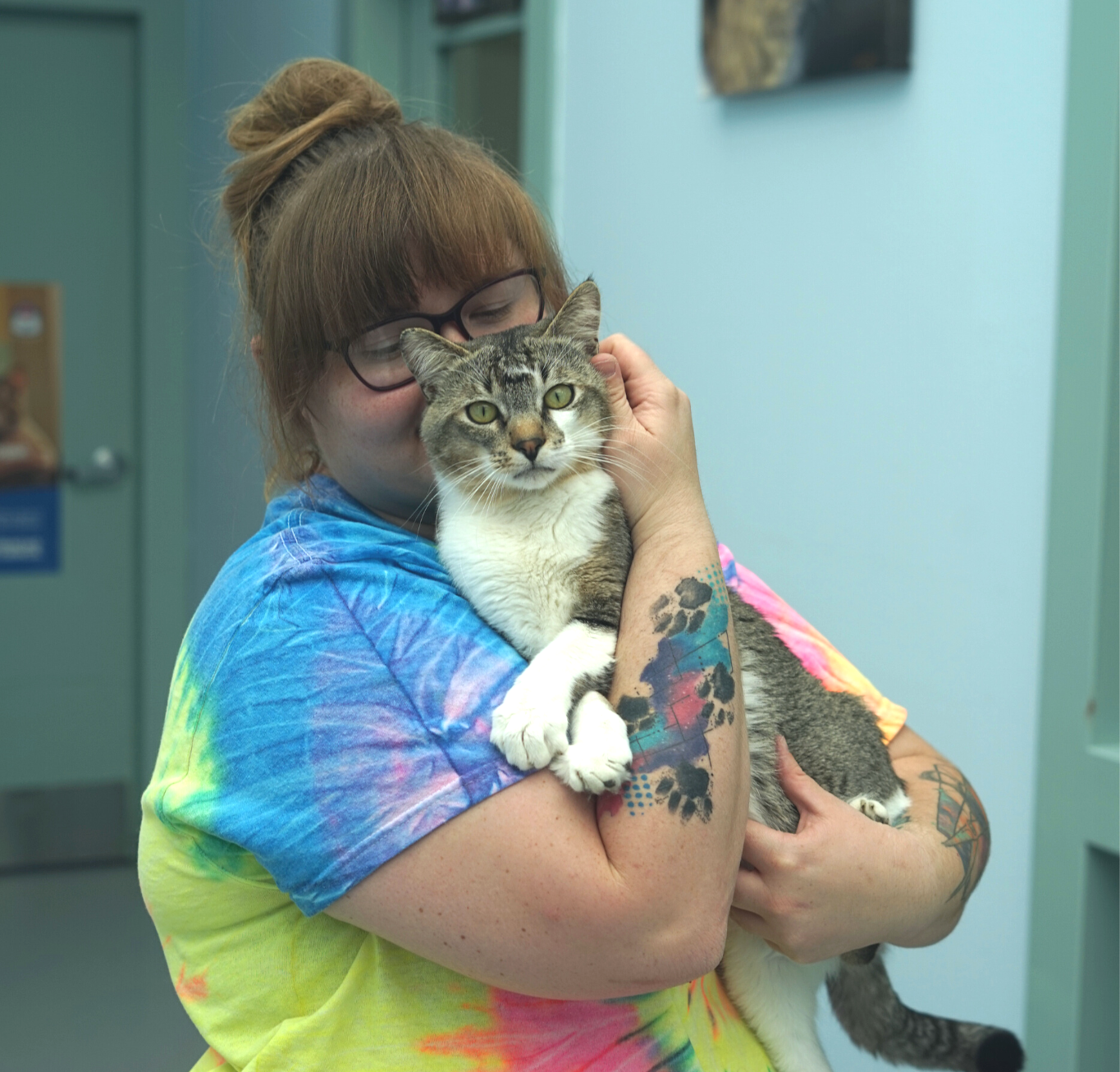
This article was included in the summer 2023 edition of our Cat Care Quarterly newsletter. Read up on more CCS news and updates by checking out the latest edition!

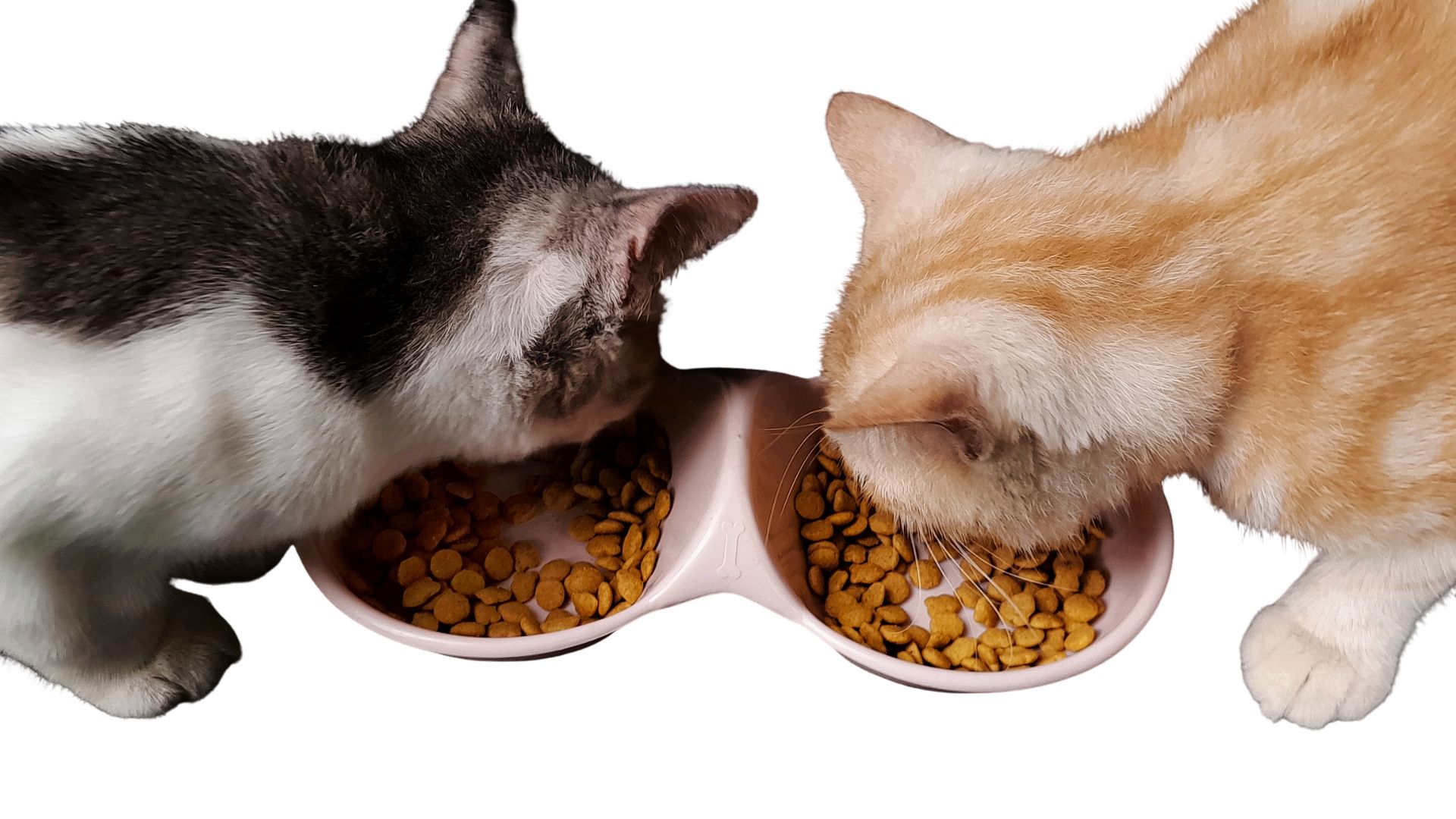
There are more cat food options than ever before, which is great for picky eaters and for cats with special dietary needs, but for a cat owner, navigating the cat food aisle can feel overwhelming. The good news is that with so many options available, even if you’re on a budget, you can still provide your cat with healthy and tasty food. In this article, we will discuss what to look for on the label, pros and cons of various cat food forms, and much more!
The best way to begin filtering through all the cat food options is by knowing what to avoid and what to look for on the product’s label.
What to Avoid:
Food Fact: Terms like “premium,” “gourmet,” “holistic,” “no fillers,” and “human-grade” aren’t legally regulated and don’t guarantee higher-quality ingredients. While foods with these labels aren’t always bad choices, it’s important not to rely solely on these words when choosing a cat food, as they have no official definitions or standards.
What to Look For:
If you’re still having trouble making a decision, you can always ask your veterinarian for suggestions. If your cat needs a specific prescription diet, always follow your veterinarian’s guidance. Also, if you’re adopting a cat, ask the shelter what food the cat has been eating and what they’d recommend. At Cat Care Society, we’re a big fan of Hill’s!
Food Fact: The terms “complete” and “balanced” are defined by AAFCO and are regulated by the Food and Drug Administration (FDA). You can feel confident that when you see “complete” on a cat food, it contains all the required nutrients for a cat. “Balanced” means it contains all the nutrients and they are in the ideal proportions.
Below are the most common forms of cat food. There’s no single perfect choice for every cat, so you may need to experiment to find what best suits your cat’s tastes and your lifestyle.
Dry Kibble: Shelf-stable, cost-effective, and convenient to measure and store, dry kibble is often a significant part of a cat’s diet. There are many options available—from formulas with specific textures to help reduce plaque and tartar, to those fortified with vitamins, minerals, and other specialty ingredients aimed at specific health goals.
Canned/wet food: Containing 70–80% moisture, canned/wet food can support kidney and urinary tract health, especially in cats that don’t drink much water. Wet food is usually very popular with cats, and sometimes essential for cats with dental issues. Some kitties may have a preference between pâté, chunks in gravy, flakes, shredded, etc., so try single cans first before buying in bulk!
Fresh/refrigerated food: This option involves fresh, but cooked, foods that are often steamed to preserve nutrients while reducing harmful pathogens. Safe food handling is still essential to ensure the food remains safe to eat throughout storage and consumption, and be sure to look for complete and balanced options.
Raw/freeze-dried raw food: The goal of commercial raw/freeze-dried raw food is to provide high-quality protein and mimic a cat’s natural prey-based diet. However, most raw cat food products are not complete and balanced, and they also carry a much greater risk of foodborne illness in your pet and in the people living in the household. Additionally, it is not recommended to feed your cat raw meat purchased at a traditional grocery store as it carries a greater risk of illness due to harmful bacteria like Salmonella and E. coli. In recent years, feeding cats raw and freeze-dried cat food has also come with an increased risk of bird flu transmission. The Food and Drug Administration (FDA) has some great research and guidance on raw pet food diets.
Many cats enjoy a combination of foods. This could look like mixing dry food in with a wet pâté at meal time or serving them separately, such as wet food in the morning and dry kibble for their evening meal. The most important thing is to choose foods with a nutritional adequacy statement on the label, which confirms they are complete and balanced and meet AAFCO nutrition standards.
One thing is for sure: cats need meat. Cats are obligate carnivores, which means they need to eat meat to stay healthy. In general, cats do best eating a diet with high amounts of protein, moderate amounts of fat, and minimal amounts of carbohydrates. Check out our blog post that goes into more detail on why cats need to eat meat to learn more!
Food Fact: Each cat is unique, and their dietary needs are unique, as well. General recommendations given in our blog or on the food products you purchase may not be the best fit for your cat. We always recommend consulting your veterinarian when deciding on the best types and amount of food to feed your cat daily.
Whatever you call them, choosy cats can make it difficult to find that balance of nutritious, delicious, and budget-friendly. A good place to start is by switching up the consistency and texture, because a cat’s senses are especially sensitive to it. From having a jaw designed for shearing meat and crunching bones to having highly sensitive whiskers and lips, they notice the subtle differences in food shape, size, and feel. For example, certain cats may love shredded wet food in gravy but stick up their noses to chunks in gravy. Below are some ideas to satisfy your feline foodie.
When to Visit a Vet: If you notice a sudden change in your cat’s food preferences, it’s a good idea to visit your veterinarian to rule out any new health conditions or dental issues. Additionally, if you notice your cat excessively scratching, licking, or biting their skin, it may indicate that they have a food allergy.
By paying attention to the label and choosing foods that meet AAFCO standards for your cat’s life stage and health needs, you can ensure your cat gets the nutrition they need. Remember that different forms of cat food—dry kibble, wet/canned, raw/freeze-dried, or fresh/refrigerated—each have their benefits, and many cats thrive on a mix. For picky eaters, experimenting with texture, temperature, and food enhancers can make mealtime more enjoyable.
Donate you extra cat food to CCS! If you have leftover cat food that your cat doesn’t enjoy or food you simply no longer need, consider sharing it with other cats. CCS gladly accepts any non-refrigerated, unexpired cat food or treats—wet or dry, new or partially used (in their original packaging). Simply bring your donations during shelter hours and leave them in the designated donation area in the lobby.
About the Author: Beth Dokolasa is a volunteer for Cat Care Society and serves on the Board of Directors. She is an instructional developer for Natural Grocers and lives in Indian Hills, Colo., with her husband, daughter, and two cats, Techno and Digit.

When Sunny came to Cat Care Society, she was heartbreakingly fragile. This petite brown tabby faced some of the toughest medical challenges we see in cats: advanced kidney disease, severe anemia, constant vomiting, and dangerous weight loss. Each day, her future seemed uncertain.
But even when she was weak, she never stopped showing us her sunny disposition. She purred through exams and headbutted our staff’s hands as if to say, “Don’t give up on me.”
And we didn’t.
Sunny quickly became a staff favorite at Cat Care Society. That’s why we gave her a special distinction: the “Lonely Hearts Club.” This group is reserved for cats who need a little extra help to find their perfect match — older cats, those with longer stays, or cats facing complex medical needs. Sunny ticked every one of these boxes, but we knew she deserved the chance to find a home where she could feel safe and loved.
To continue receiving the daily medications, fluids, lab work, and constant care that keep cats like Sunny alive, we rely on support from donors like you. Every lab test, every dose of medicine, every gentle pat from our veterinary team is only possible because someone chose to give.
Most importantly, generosity from donors like you gave her the greatest gift of all: time. Time to grow stronger, stabilize, and wait for someone who would open their heart to a 14-year-old cat with lifelong medical needs and costly care.
After five months of care in the shelter, Sunny met her perfect match. A local veterinarian met Sunny and instantly knew they were meant to be together. Able to provide the ongoing medical attention Sunny so desperately needed, she was able to give Sunny a loving and restorative home to live out her golden years.
“Sunny (now called Cardi) is doing great! She is a very sweet girl, loves pets and cuddles, and has adjusted well. Her kidney disease is also doing well, her anemia is holding steady, and her weight has continued to go up. I love senior kitties and helping them feel the best they can by managing any medical issues.” – Dr. Hale, Sunny’s adopter

At Cat Care Society, every cat’s care is guided by a compassionate and expert approach — combining veterinary protocols, staff training, donor-funded medical treatments, and specialized initiatives like the Lonely Hearts Club. Sunny’s recovery was not a one-time miracle, but the result of this proven approach designed to identify, treat, and advocate for our most vulnerable feline friends.
Today, Sunny is no longer a lonely heart. She is safe, cherished, and adored — thanks to supporters like you.
But while Sunny’s story has a happy ending, many other Lonely Hearts are still waiting at Cat Care Society. Senior cats. Cats with medical challenges. Cats who have been overlooked time and again. They are counting on us, and on you, to give them love, care, and a second chance at life.
Will you open your heart today to help the next lonely heart find their loving home? Your gift provides the medications, veterinary care, and loving support that make happy endings like Sunny’s possible.
With gratitude,
– EC Michaels
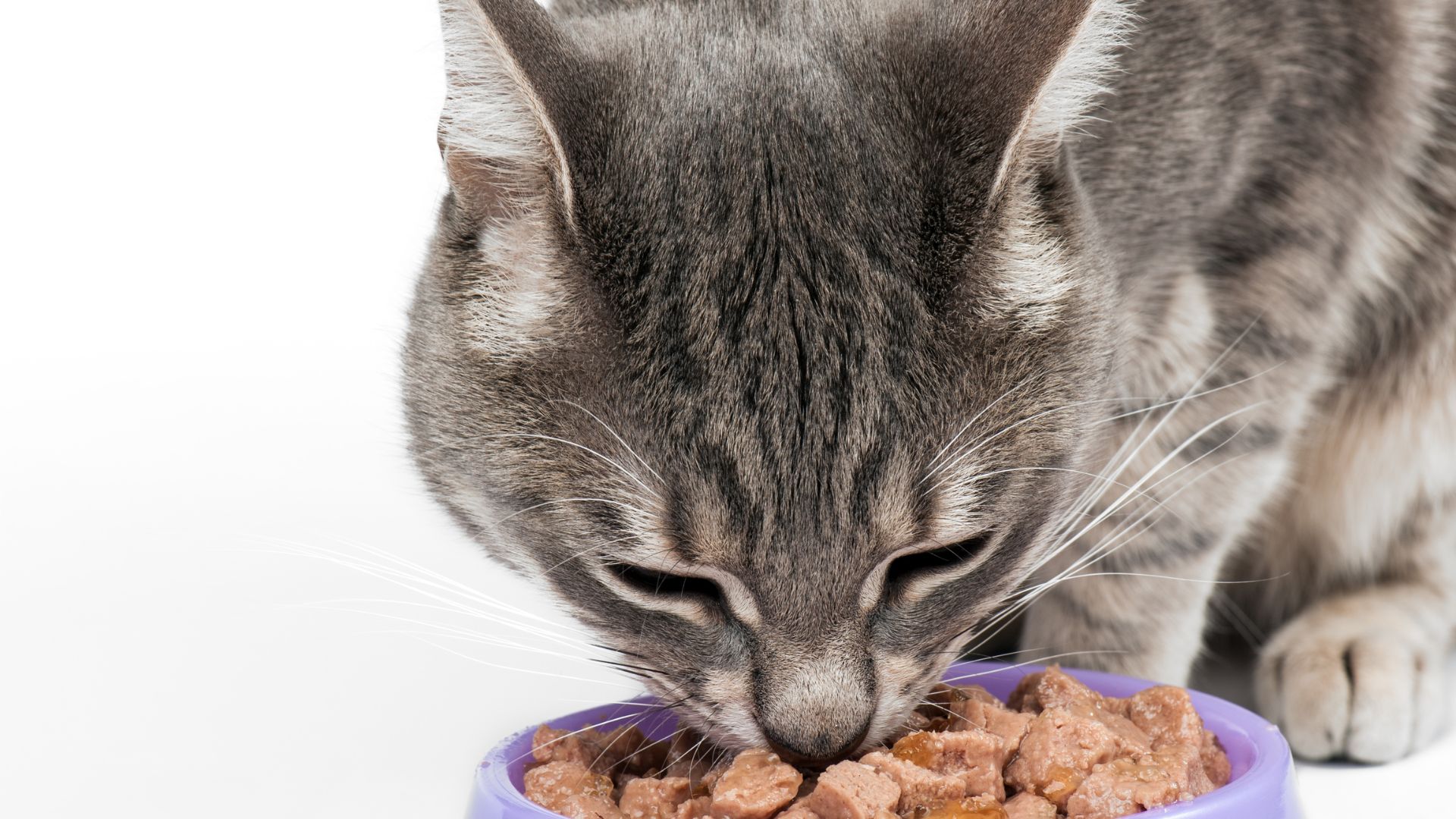
Cats are often known for being picky eaters—whether it’s an aversion to certain kibble shapes, a preference for pâté over chunks in gravy, or a liking for food served slightly warmed. For cat owners, finding a food that their cat enjoys while still meeting nutrition needs can be a real challenge. However, one thing remains certain: cats are obligate carnivores and need to eat meat.
An obligate carnivore is an animal that must eat meat to survive because its body is biologically adapted to derive essential nutrients solely from animal-based sources. Cats evolved as hunters that consume prey containing high amounts of protein, moderate amounts of fat, and minimal amounts of carbohydrates, and they still typically do best consuming those proportions today. Just like humans, cats also require certain amounts of micronutrients, like vitamins, minerals, and amino acids to thrive.
Cats require many kinds of micronutrients from a variety of sources. Below are some of the key nutrients that are either exclusively found in meat or for which meat is the best source.
Without adequate intake of these vital nutrients, cats can experience deficiency symptoms and even irreversible damage to their health, so it’s important to provide them with a complete and balanced diet that reflects their biological need for meat-based nutrition.
Food Allergy Note: Even though cats need meat, they can still develop allergies to certain kinds of meat. The most common meat allergens for cats are beef, chicken, and fish. If you regularly feed these to your cat and notice them scratching, licking, or chewing themselves more than usual, they may have a meat allergy. Your cat’s veterinarian may recommend an elimination diet trial where you avoid the foods they regularly eat for a designated time to see if the symptoms improve. Alternative meat protein like rabbit, duck, and venison are often good options for cats with known meat allergies.
If you’re starting to think this is all leading to a time-consuming recommendation for homemade, all-meat meals—don’t worry. Regardless of quality, feeding your cat only prepared muscle meat (such as chicken breast or ground turkey) can actually lead to essential nutrient deficiencies! Cats need a variety of nutrients found in organ meat and animal fat, too. For balanced and complete nutrition, cats typically do best consuming commercially balanced raw and cooked food.
Look for products that contain a nutritional adequacy statement on the label. This indicates that the food meets the nutritional standards set by the Association of American Feed Control Officials (AAFCO), a nonprofit that establishes nutritional standards for pet foods. Cat Care Society is a proud partner of Hill’s Food, Shelter & Love program, and we feed Hill’s to our shelter cats. Hill’s recipes meet AAFCO nutrition standards, so our cats get the complete and balanced nutrition they need. (Note: AAFCO does not directly test or certify pet foods. Pet food companies use third-party testing agencies to analyze their foods according to AAFCO guidelines.)
Supplemental homemade meals can often be included as a part of your cat’s healthy diet, provided that it’s approved by the cat’s veterinarian, safely prepared, and does not include any ingredients harmful to cats, such as garlic, onions, raw eggs, and excess sodium. Additionally, do not feed your cat raw meat. While cats eat raw meat in the wild, feeding them raw meat purchased at a traditional grocery store can cause illness due to harmful bacteria like Salmonella and E. coli.
Understanding your cat’s biological need for meat is essential to supporting their lifelong health and well-being. As obligate carnivores, cats rely on meat not just for protein, but for critical nutrients like taurine, arachidonic acid, and essential vitamins that they cannot make on their own. By choosing high-quality commercial foods that meet AAFCO standards and consulting with your veterinarian, you can feel confident that you’re giving your cat the nourishment they need to thrive.
About the Author: Beth Dokolasa is a volunteer for Cat Care Society and serves on the Board of Directors. She is an instructional developer for Natural Grocers and lives in Indian Hills, Colo., with her husband, daughter, and two cats, Techno and Digit.
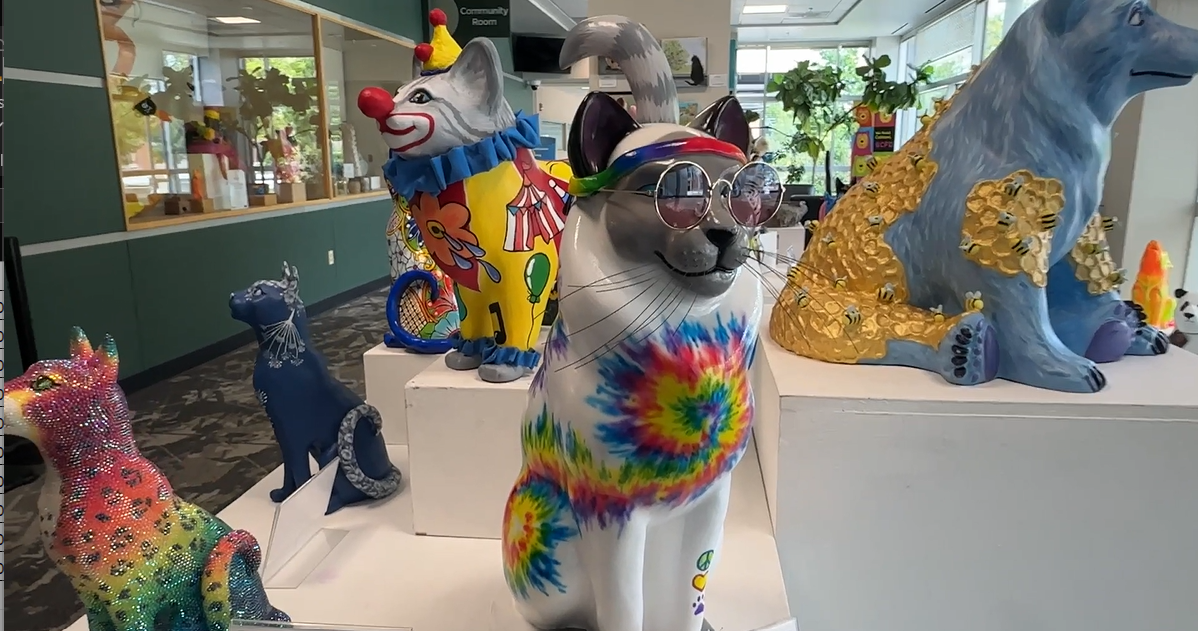
Cat Care Society is proud to announce 29 local artists selected for the 2025 “Tails of the Painted Cats” (TOPC) exhibition. These Colorado creatives have each transformed fiberglass animal sculptures into stunning, one-of-a-kind works of art, now on public display and set to be auctioned this fall to benefit the shelter’s life-saving programs.
Now in its tenth year, Tails of the Painted Cats has become CCS’s signature fundraiser and a beloved event in the Denver arts community. The event brings together artists, animal lovers, and supporters to celebrate compassion through creativity.
“What began as a small, unique fundraiser has grown into a cherished tradition,” said Cat Care Society Executive Director EC Michaels. “As our largest fundraising event, every ticket, bid, and vote truly makes a difference, supporting critical medical care, enrichment, and safe housing for the more than 1,000 cats who come through our shelter each year.”
Seventy-five artists applied for this year’s collection, of which 29 were selected to create animal sculptures. The sculptures are currently on tour.
This year’s exhibition includes:
|
|
“It’s been an incredible joy to watch this event grow over the years,” said Jane Dorsey, Cat Care Society’s longtime Art Director. “This year’s collection is one of our best yet—full of creativity, love, and spirit.”
Tara Deenihan, Art Coordinator and incoming lead for the program, added: “The artists participating this year have truly blown our minds! We have several new artists and many returning artists, and seeing their ideas come to fruition has been really exciting. The cats are all so different and beautifully realized – I love seeing what cats can inspire.”
The public is invited to view the sculptures in person or online and vote for their favorite in the People’s Choice Award. The winner will be announced at the TOPC gala on October 18, and the artist will receive a cash prize.
This year’s TOPC gala will take place Saturday, October 18, 2025 at Pinehurst Country Club and will be masquerade themed. 9News Reporter, Steve Staeger returns as this year’s emcee. Tickets will go on sale in mid-June.
Learn more about Tails of the Painted Cats at catcaresociety.org/topc/
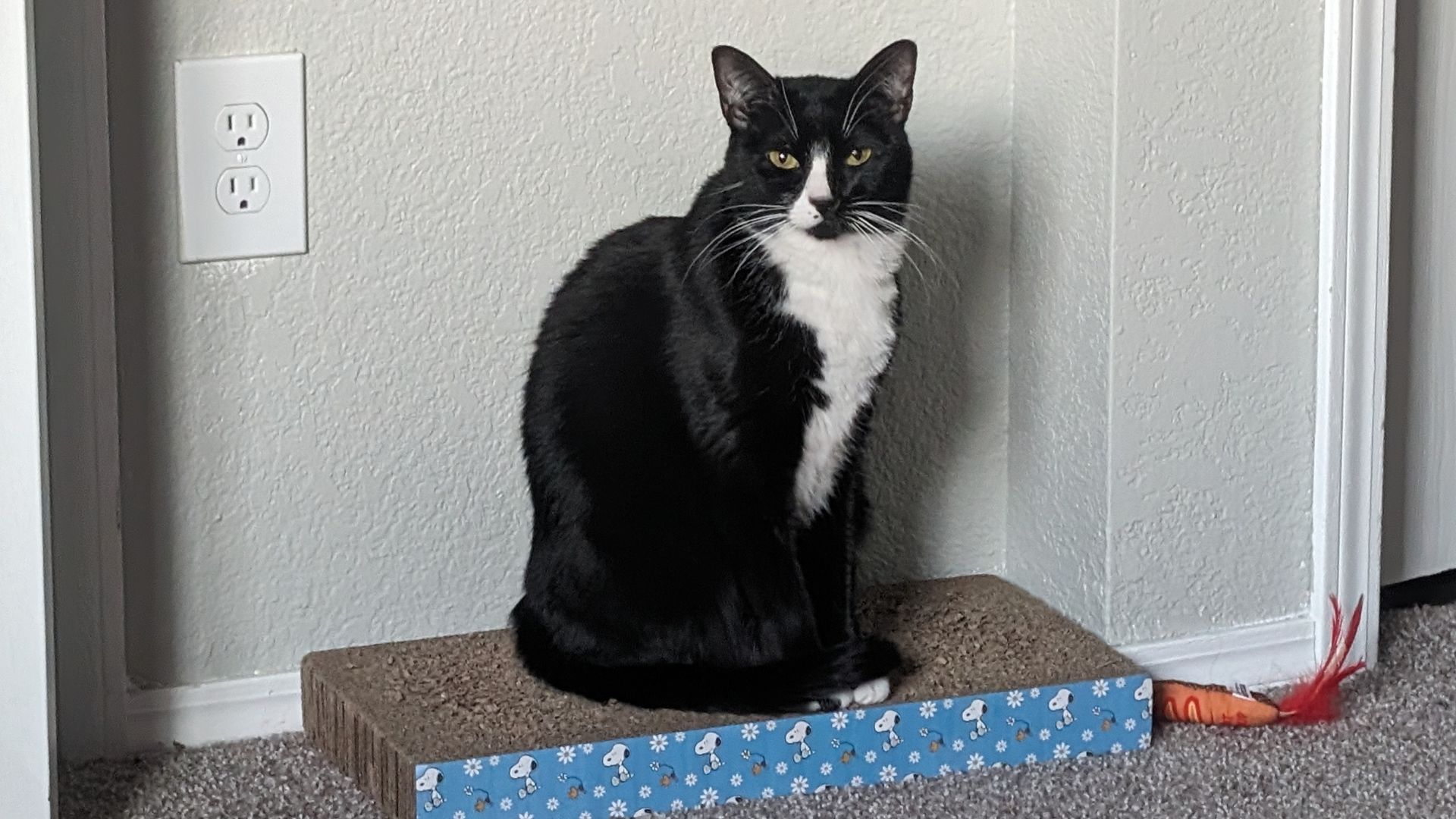
At Cat Care Society, we know that caring for cats is a team effort—and one of the most important parts of that team is our foster network. While our shelter provides safe, dependable housing and veterinary care for hundreds of cats each year, foster homes offer something we can’t always replicate within our walls: a quiet, individualized space where certain cats can truly thrive.
Foster homes complement the work shelters do. They enable us to have a flexible and responsive system that helps more cats heal and grow, and they allow us to stretch our resources further, provide individualized support to vulnerable cats, and ultimately increase each cat’s chances of getting adopted.
Below are just a few of the ways that foster homes support shelters and countless cats, both directly and indirectly!
Shelters provide a lifesaving refuge for cats, offering medical care, nutrition, protection, and enrichment. But for certain cats, especially those with special needs, a home environment can offer extra support that helps them recover, adjust, or grow in ways that a busy shelter environment might not allow.
Foster care can be beneficial for:
These cats benefit from one-on-one attention and a stable environment where they can relax and show their true personalities.
Foster care expands a shelter’s capacity. Every cat that goes into a foster home opens up space in the shelter for another animal in need. This is a critical part of how shelters operate, especially during busy seasons when intake numbers rise.
Fosters also allow shelters to:
Foster care is not a separate system—it’s part of CCS’ toolkit, allowing us to stretch our impact and offer flexible, creative solutions when cats need them most.
Cats in foster care often show their true personalities more readily than they might in a shelter. This helps CCS provide more information to potential adopters get a clearer sense of whether a cat is the right fit for their home.
Foster homes play a critical role in:
The result? Cats who are more confident, better understood, and great candidates for adoption!
Strawberry (shown at the top of this post) came to CCS as an extremely fearful cat who demonstrated this fear with aggression. We’re talking about spitting, hissing, growling, and lunging at CCS staff, completely unprovoked. A medical workup ruled out any underlying medical conditions that could be contributing to the behavior. Strawberry was a great candidate for a quiet foster home where she could have space, get comfortable, and work on socialization at her own pace.
In just over a week, a report from the foster stated that Strawberry had become a lap cat, was accepting and demanding pets, and had begun giving “head boops” or bunting, which is one way cats show affection. The foster was also able to quickly pick up on Strawberry’s motivations, favorite toys, and preferred ways to receive pets which accelerated Strawberry’s comfort level and ability to socialize. With patience and gentle care, Strawberry came out of her shell and built a lot of confidence.
After just under two months in the foster home, Strawberry came back to the shelter and was adopted a short time later!
At Cat Care Society, we’re proud to offer a safe, well-equipped shelter environment for our cats. But we also recognize that cats, like people, have individual needs. Foster homes allow us to meet those needs with compassion and flexibility.
Foster homes don’t replace shelters—they enhance them. Together, we’re able to give each cat the kind of care that works best for them. Whether it’s a cat recovering from surgery, a shy kitten learning to trust, or a beloved pet temporarily staying with us while their owner gets back on their feet—foster care gives us options. And options save lives and produce the best possible outcomes.
We’re incredibly grateful for our foster caregivers and the role they play in this mission. Because of them—and in partnership with our shelter—we’re able to do more, reach farther, and help every cat get one step closer to home.
Foster homes are the quiet heroes of the cat rescue world. They don’t just provide temporary shelter—they provide special cats opportunities to heal, grow, and shine. Their impact can’t be overstated: they help shelters run more effectively, improve outcomes for individual cats, and create a more compassionate, responsive animal welfare system.
At Cat Care Society, we are deeply grateful for every person who opens their home to a cat in need. If you’re interested in becoming a foster, please apply! We’re especially looking for fosters willing to take in cats with medical needs, those needing behavioral support, mother cats with litters, and young kittens. CCS provides all necessary training and support, including costs for your foster cat’s needs from food to medical care.
About the Author: Beth Dokolasa is a volunteer for Cat Care Society and serves on the Board of Directors. She is an instructional developer for Natural Grocers and lives in Indian Hills, Colo., with her husband, daughter, and two cats, Techno and Digit.
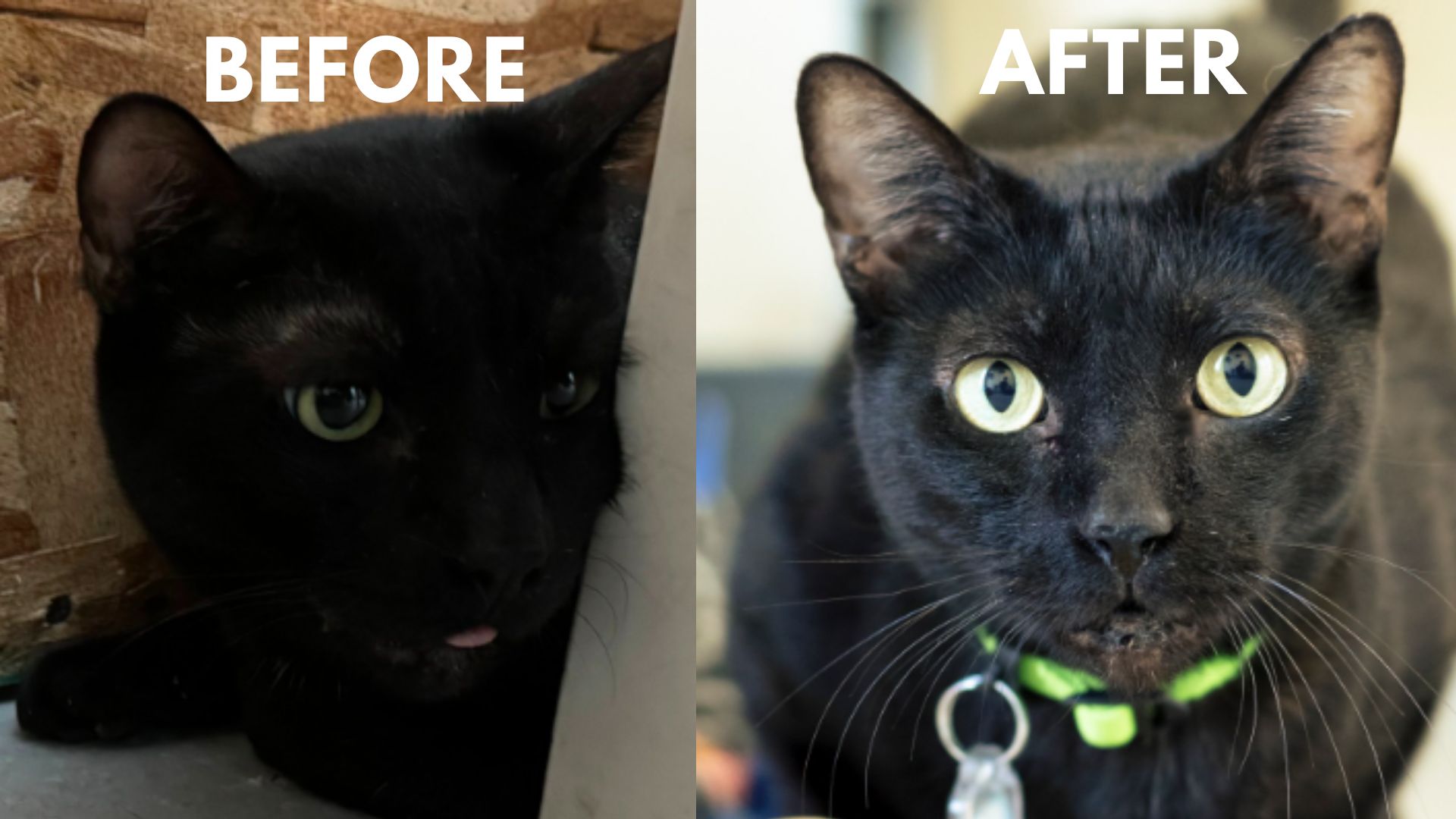
When I walk into Cat Care Society, or any shelter, with my camera, I don’t see homeless pets – I see stories waiting to be told.
I see cats with beautiful personalities just waiting to come out once they find the right person. Some are shy and mysterious, others sassy or playful, but they all have one thing in common: they deserve to find that Right Person. We live in a world where adoptions begin with a scroll on a screen, where the very first impression is what makes a connection, where love at first sight is very real.
That’s where photography comes in. They need not just any photo, but one that speaks err …MEOWS.
Online pet profiles are now often the first step to adoption. A great photo can stop someone mid-scroll, make a potential adopter feel something, and highlight a pet’s unique spirit with their eyes, their head tilt, and their expressive tail.
Think about it this way – would a blurry photo of a dark shadow stop your eyes from scrolling? Or would you instead pause on a well-lit portrait of a clear-eyed feline looking through the phone directly into your soul?
Images like these invite a second look. And that second look can turn into love.
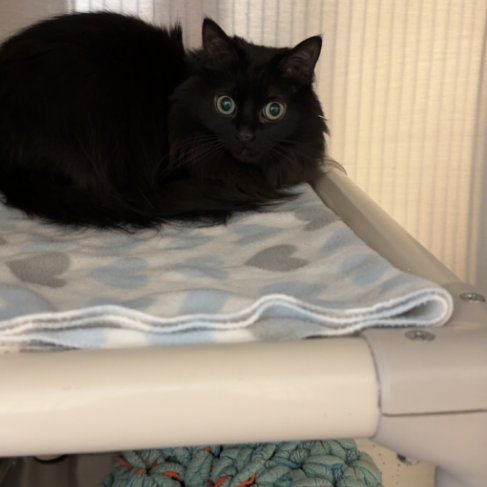
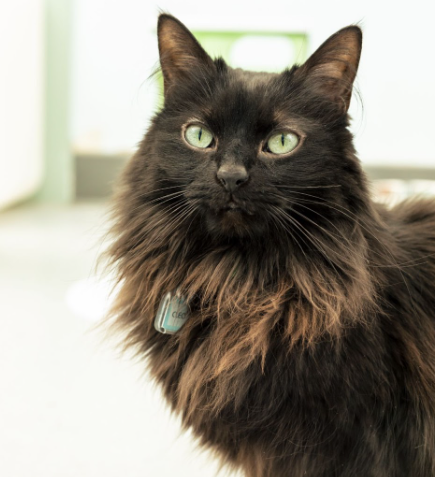
By the time I get to them, most of these cats have had enough days to settle into their new surroundings. Their original intake photo is usually taken just as they arrive. They’re not sure where they are or who these strange people are and it shows. After a few days, most have realized they’re safe. They’ve gotten some sleep, maybe some treatment, delicious food, they generally feel better, and that also shows.
Cleo, as you can see from the intake photo versus the portrait, was all about asking me for attention when I came in to photograph her. Her royal line was becoming obvious! And since then, she has been adopted into a loving family.
While I love volunteering my professional photography for Cat Care Society and others, I know many fosters are doing amazing work on their own — and you want your foster cats to stand out, too.
The next time you see an adoption profile, take a second to really see the cat. If you feel drawn in by the photo – even if just for a moment – know that was no accident.
It was love, caught in a frame.
Susie Inverso owns Crimson Cat Studios Pet Photography in Lakewood, CO. She specializes in capturing the true spirit of companion animals through compassionate, story-driven portraits. You can learn more about her at www.crimsoncatstudios.com
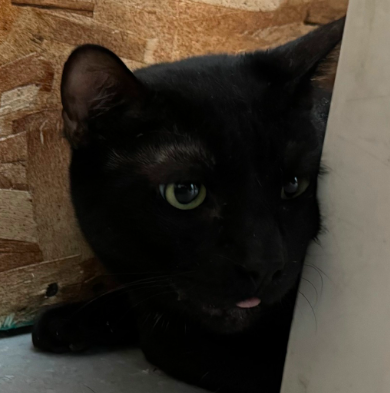
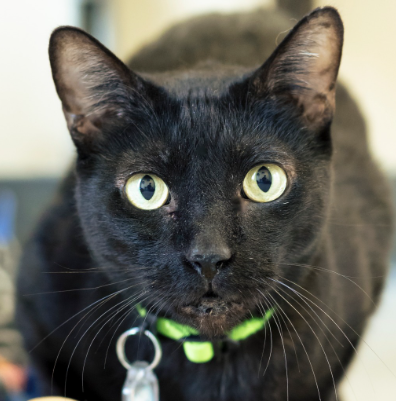
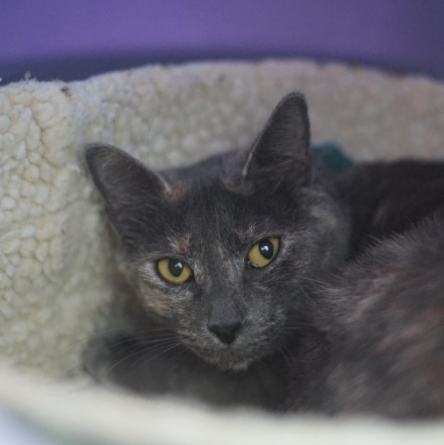
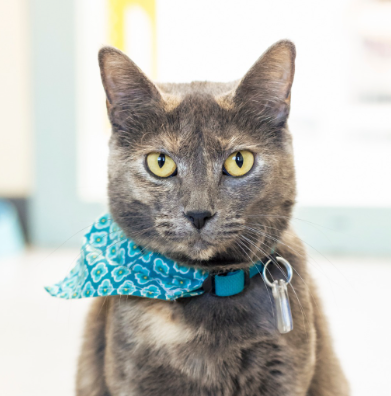
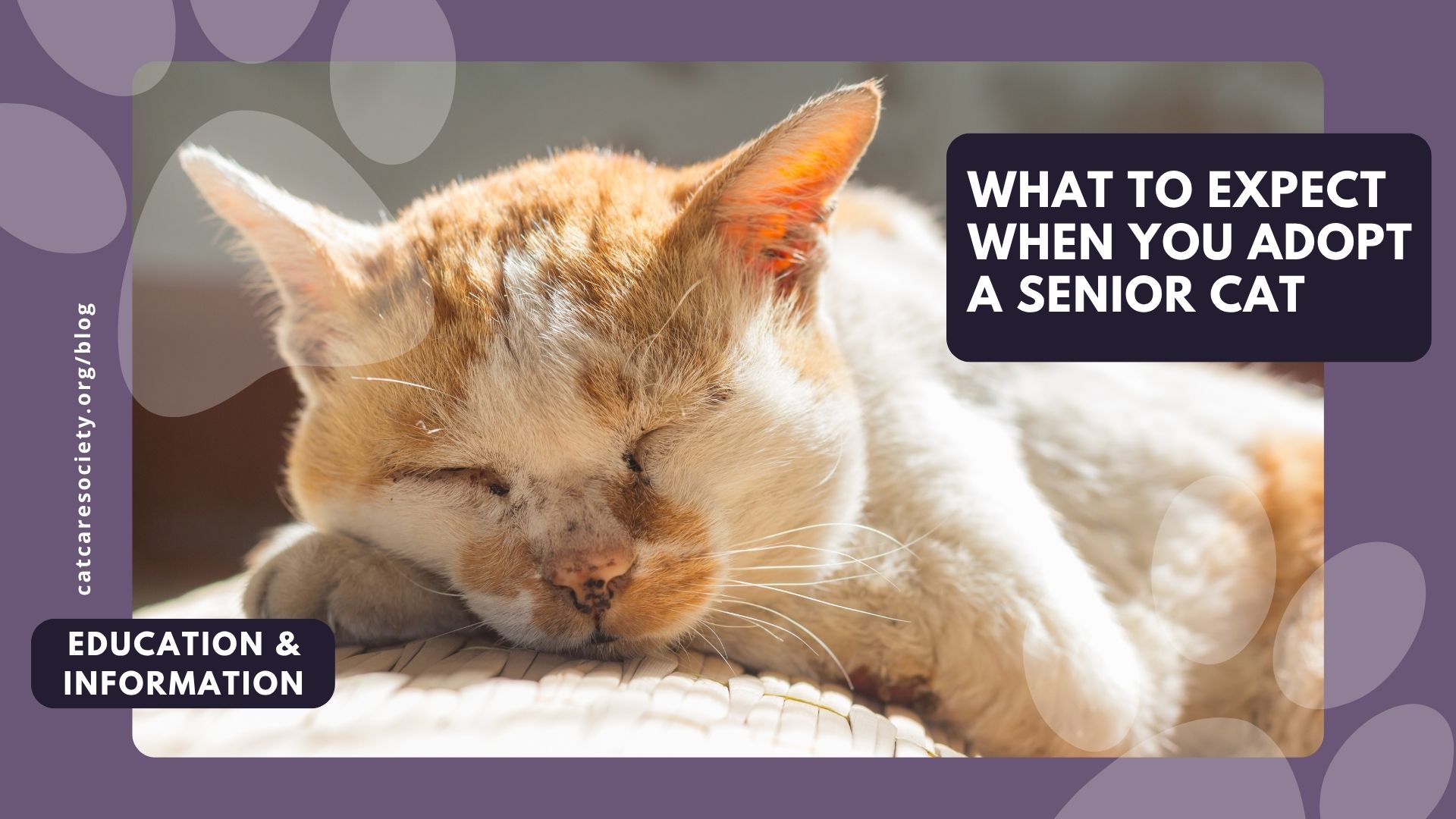
Cat Care Society believes that all cats are worthy, regardless of their age or abilities. Senior cats, in particular, hold an extra special place in our hearts—and it’s not just us! Time and again, we hear from adopters who submit successful adoption updates that feel the same way. Senior cats are sometimes overlooked in shelters, but those who choose to adopt them often say it’s extremely rewarding and they’re amazed at the quick and deep connections they make.
While every senior cat is unique and has their own personality, there are some common things you can expect and prepare for when you adopt a senior cat, which we’ll share later in this article.
Unlike humans, cats don’t start receiving AARP letters in the mail to let them know they’re considered a senior, but they do often show their age in subtle ways, through their physical health and behavior. Cats typically enter the senior category at age 10, which is when their nutritional and wellness needs begin to shift. However, some veterinarians begin senior wellness exams as early as age seven to help catch potential health concerns early.
Like humans, cats can age prematurely due to lifestyle factors such as lack of nutrition, trauma or injury, and lack of preventative veterinary care. When a cat’s history is unknown—as is often the case with strays and other cats seen in shelters—veterinarians rely on indicators such as the condition of their teeth, skin, coat, eyes, and mobility to estimate age.
Below are some common, but often unexpected, traits and tips from senior cat households.
Because older cats have lived longer and likely experienced highs and lows, they recognize when they’ve got it good! When you bring a senior cat into your home and provide them with a cozy bed, stable routine, and tasty food, they are more than happy to show their gratitude and appreciation. Whether it’s slow blinks, sweet head bumps, or deep purring, senior cats have their own gentle ways of expressing love and appreciation.
Along with a special diet, senior cats may require ongoing medication, depending on the health condition. Fortunately, just like other habits, such as always escorting you to the bathroom or meowing loudly if their mealtime is even one minute late, cats can also get into the routine of taking their medicine. When you adopt a cat with a health condition from Cat Care Society, you’ll receive guidance on what foods and treats may be most appropriate for your new cat, as well as instructions on how to administer any required medication to set you both up for success. For cats requiring specialized ongoing care, we may have you meet with our veterinary team before completing the adoption to ensure you understand your new pet’s medical needs, feel confident transitioning them to your home, and have all the information you need to continue care with your preferred veterinarian.
Opening your home to a senior cat means offering love, comfort, and stability when they need and appreciate it the most. Plus, the bond and companionship you’ll share can be incredibly rewarding.
At Cat Care Society, we know how special older cats are, and we’re here to support you every step of the way. Whether you’re a first-time adopter or an experienced cat parent, we invite you to consider the joy of bringing home a senior cat.
Please note that the traits we’ve shared are common among senior cats, but not guaranteed. Your new feline friend may have their own quirks and needs based on their personality and life experiences.
When browsing our cats available for adoption, you can filter by age group (see image below) to easily find your perfect senior friend. Many of our older cats are members of our Lonely Hearts Club, a group of special cats chosen by CCS staff to spotlight those who have been overlooked in the past, despite their potential to thrive in the right home. No matter their past experiences, a senior cat’s next chapter with you could be the most meaningful.
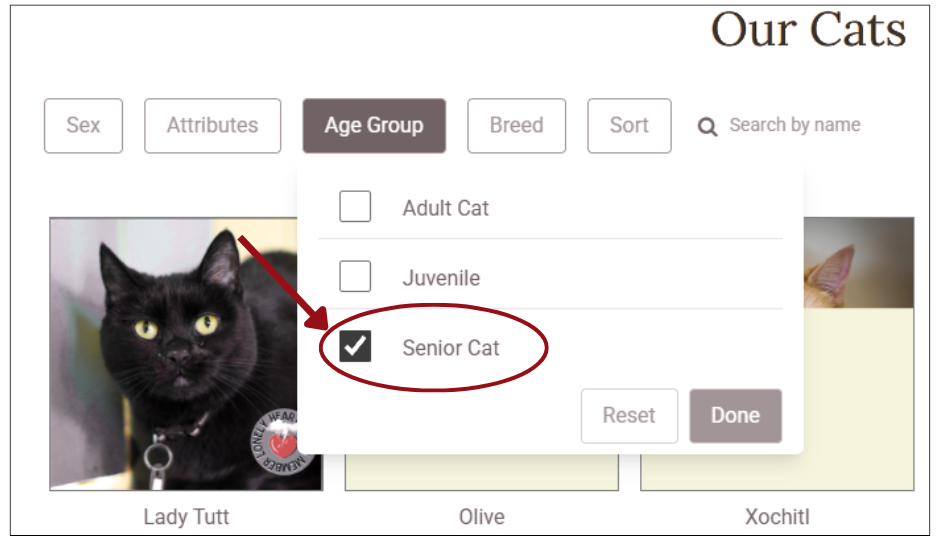
About the Author: Beth Dokolasa is a volunteer for Cat Care Society and serves on the Board of Directors. She is an instructional developer for Natural Grocers and lives in Indian Hills, Colo., with her husband, daughter, and two cats, Techno and Digit.
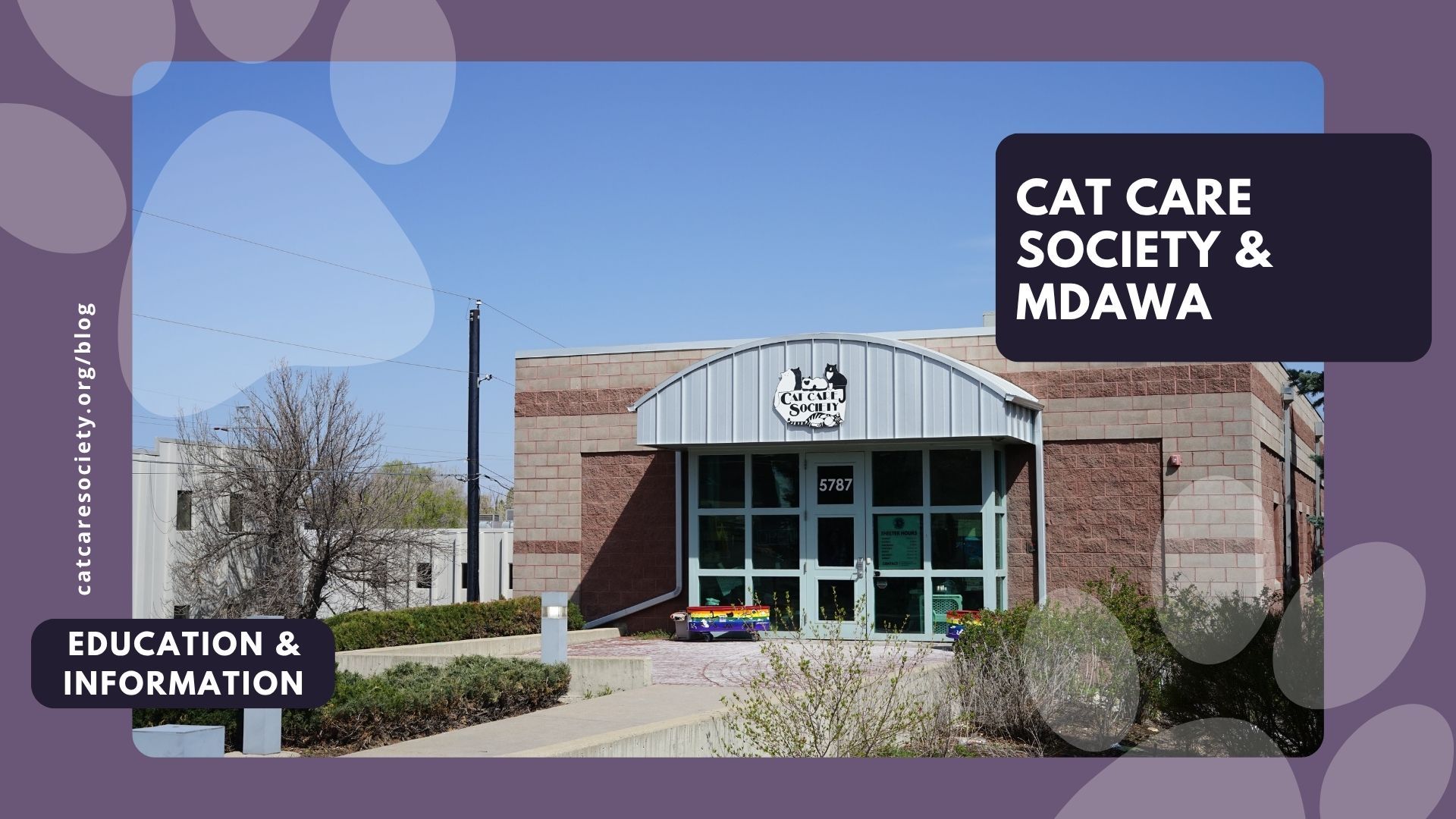
Cat Care Society is a proud member of MDAWA, the Metro Denver Animal Welfare Alliance. This coalition of 20+ local shelters, rescue groups, and animal service providers work together to promote humane care for companion animals in our community.
At Cat Care Society, collaboration with other shelters is imperative to our mission. Over half of the cats who come to our shelter are transferred from other shelters or rescues who don’t have the resources to support the needs of these special cats.
Ready to adopt a cat in need? Check out this helpful adoption guide from MDAWA (along with our answers!).
Before You Adopt a Pet: What to Know and Ask
Adopting from a Metro Denver Animal Welfare Alliance (MDAWA) Member Means Adopting with Confidence
Adopting a pet is one of the most rewarding decisions you can make—but it’s also a big commitment. Choosing the right adoption organization is just as important as finding the right animal. When you adopt from a member of the Metro Denver Animal Welfare Alliance (MDAWA), you’re supporting a network of organizations that are dedicated to ethical, compassionate, and community-focused animal welfare.
MDAWA members aren’t just placing pets—they’re committed to being your long-term partner. Here’s how they go above and beyond, and what to ask when you’re considering adoption.
They’ll Be Your Long-Term Animal Welfare Partner
MDAWA organizations understand that adoption is just the beginning of your journey with a new pet. They offer resources and support to help adopters navigate any challenges that may come up after adoption—ensuring the best outcome for both you and your pet.
They Work with You to Make the Right Match
Rather than rushing the adoption process, MDAWA members take the time to make thoughtful, informed matches. They consider your preferences, lifestyle, experience, and the specific needs of the animal to help ensure a successful, lasting connection.
They Prioritize Animal Health and Wellness
All animals adopted through MDAWA organizations receive thorough medical care before adoption. This includes vaccinations, spay or neuter surgeries, and other needed veterinary treatment. They also provide behavioral support, so pets are set up for success in their new homes.
They Help the Most Vulnerable Local Animals
MDAWA members focus on protecting the Denver Metro area’s most vulnerable animals—those who are stray, surrendered, or at risk of homelessness—rather than bringing in only easily adoptable animals from out of state.
They Work Together to End Pet Homelessness
These organizations collaborate to provide a wide range of services that benefit the community, such as lost-and-found programs, low-cost veterinary care, spay/neuter clinics, and pet food pantries. By supporting a MDAWA member, you’re also supporting efforts to reduce the number of homeless animals in your neighborhood.
When you’ve found a pet you’re interested in, it’s a good idea to ask the organization a few key questions to make sure you’re adopting from an ethical, responsible source. Here’s a checklist to guide you:
By carefully choosing where you adopt, you can ensure your new pet has been well cared for and is a good fit for your family. When you adopt from a MDAWA member, your decision not only changes a pet’s life—it also supports a network of organizations working together for ethical animal welfare across the Denver metro area.
Consider adopting your next pet from a MDAWA member.
Learn more about our mission and our members at mdawalliance.org/about
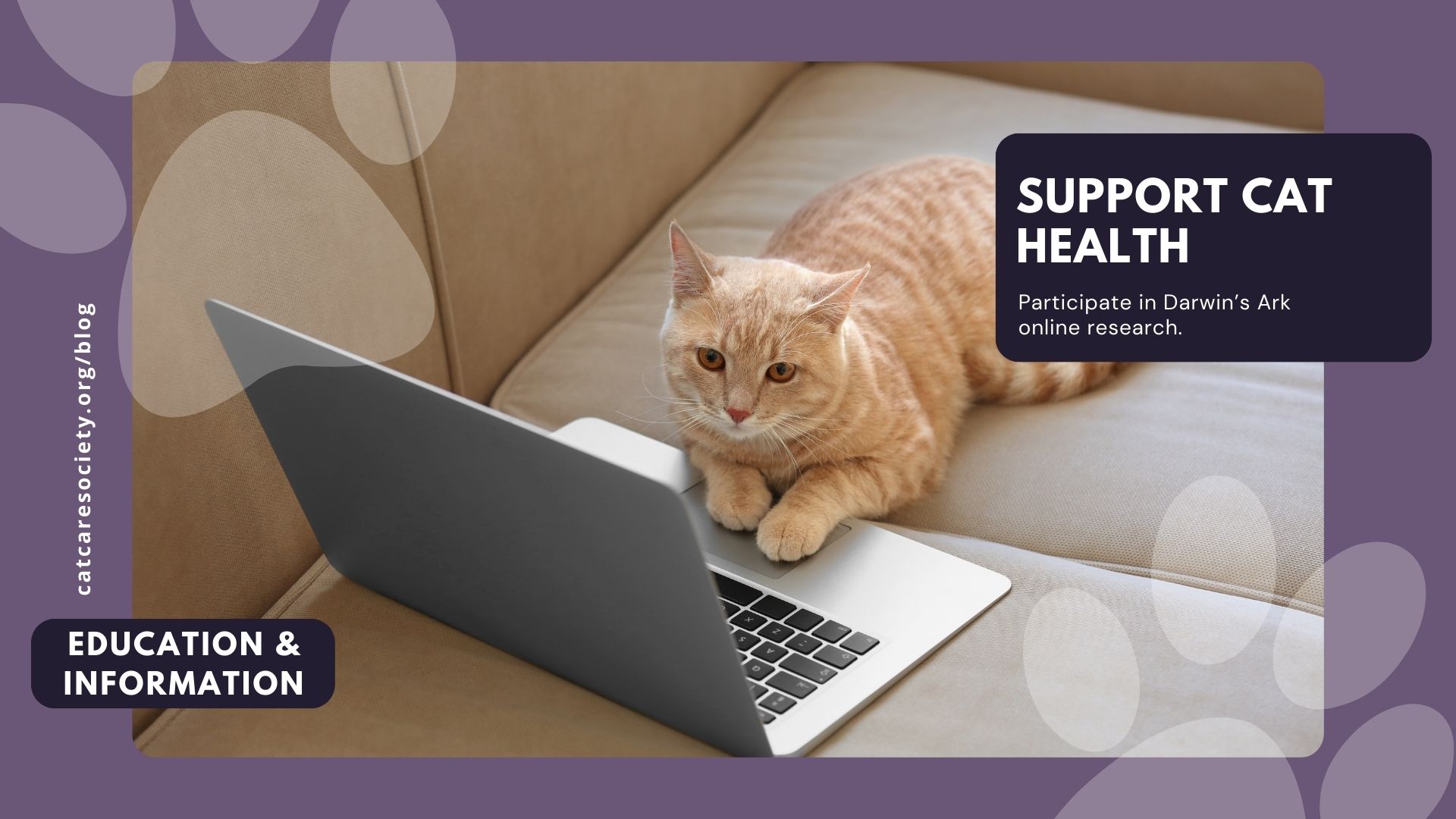
Let’s be honest—if you’re reading this, we probably don’t need to tell you how much joy cats bring into our lives. You already know the comfort of a purring cat in your lap, the entertainment of zoomies, and the simple calm of a cat sunbathing in a window. Cats are family.
But even though they’ve stolen our hearts (and our favorite spots on the couch), there’s still so much we don’t understand about their health. That’s where research comes in—and your participation can help in uncovering the mysteries behind feline wellness.
The health and wellbeing of cats often get overlooked in comparison to other pets like dogs. While research into canine health has flourished over the years, we’re only beginning to scratch the surface (pun intended) when it comes to understanding the unique needs and medical conditions of cats. From chronic illnesses like feline diabetes and kidney disease to behavioral issues such as anxiety and aggression, there are still many unanswered questions about what causes these conditions and how to best treat them.
To improve the lives of cats everywhere, we need more research. By deepening our understanding of how cats experience illness, aging, and stress, we can develop better treatments, prevention strategies, and care—helping them live longer, healthier, and happier lives.
One exciting initiative that aims to fill this gap in feline research is Darwin’s Ark, an online platform started by two pet lovers, a geneticist and an engineer, to advance scientific understanding of pet health. The website is an invaluable resource for anyone passionate about improving the lives of both dogs and cats through data-driven research.
For our purposes, we’re focusing on cat health, and at its core, Darwin’s Ark is about collecting and analyzing data from real cats living in homes, shelters, and other environments. The goal is to create a comprehensive database that researchers can use to study genetic and environmental factors that influence cat health. By gathering data on everything from a cat’s breed and genetic makeup to its medical history and behaviors, Darwin’s Ark provides vital insights that can shape future research.
The beauty of Darwin’s Ark is that it allows cat owners and shelters alike to play an active role in research. By participating in the program, you’re contributing valuable information that could lead to breakthroughs in veterinary science. Here’s how you can get involved:
The research conducted through Darwin’s Ark has the potential to change the way we think about feline health. By looking at the genetic and environmental factors that influence cats’ lives, researchers can gain a better understanding of how diseases like cancer, heart disease, and even infectious illnesses develop in cats. This information will help veterinarians make more accurate diagnoses, prescribe better treatments, and ultimately improve the lives of cats.
But it’s not just about medical conditions. Research into feline behavior and mental health is equally important. Many cats suffer from anxiety, depression, or stress, often due to changes in their environment, lack of stimulation, or inadequate socialization. By understanding the root causes of these behavioral issues, we can develop strategies to create happier, more well-adjusted cats who can thrive in their homes.
Additionally, shelters can use the findings from these studies to provide better care for cats in their care. Whether it’s understanding how to better treat sick cats, providing more enrichment opportunities, or improving the adoption process, data-driven research will help shelters give cats the best possible chance at a healthy and fulfilling life.
In the grand scheme of things, supporting research into feline health is about more than just helping individual cats—it’s about ensuring that all cats, everywhere, can live longer, healthier lives. The more we know, the better we can protect and care for our kitty companions, whether they’re our beloved pets at home or shelter cats.
For more information or to get started, visit Darwin’s Ark today and be sure to check out their fascinating blog article on why cats are so understudied. By supporting platforms like Darwin’s Ark, we take a step toward making a tangible difference in the lives of cats, promoting better health outcomes, and advancing our understanding of these extraordinary animals. Every small contribution counts—whether it’s participating in research, sharing the word, or making a donation. Let’s work together to ensure that all cats can live their best lives.
About the Author: Beth Dokolasa is a volunteer for Cat Care Society and serves on the Board of Directors. She is an instructional developer for Natural Grocers and lives in Indian Hills, Colo., with her husband, daughter, and two cats, Techno and Digit.
Please include your full name on a gift note when sending donations through Amazon or Chewy, so we can properly acknowledge your generous contribution! Without it, we won’t be able to identify that the items are from you. Also, please keep your shopping receipt, as it serves as your official donation receipt.
Copyright © 2024-2025 Cat Care Society. All Rights Reserved. | Privacy Policy
The Cat Care Society is a non-profit 501(c)(3) organization. Our tax identification number is 84-0869447.
Place your bids in our silent auction featuring cat-themed sculptures, paintings, pottery, and more!
Bidding will close Saturday, October 18, at approximately 7:30 PM.
The shelter will close at 3 PM today as we prepare for our Tails of the Painted Cats fundraising gala.
We apologize for any inconvenience. The shelter will reopen with normal hours on Sunday.
Upcoming events, special announcements, and cute cat photos delivered to your inbox bi-weekly!